Hội An’s Old Town is one of those rare places where history breathes through every street, every wall, and every lantern glowing softly at night. Recognized as a UNESCO World Heritage Site since 1999, the Old Town is remarkably well-preserved, a living testament to the centuries when Hội An was one of the most important trading ports in Southeast Asia. From the 15th to the 19th centuries, merchants from Japan, China, India, and later Europe passed through, leaving behind traces of their cultures that have been absorbed into the town’s fabric. Unlike other historic towns turned into open-air museums, Hội An’s Old Town is still lived in, with homes, shops, and temples used much as they were centuries ago.
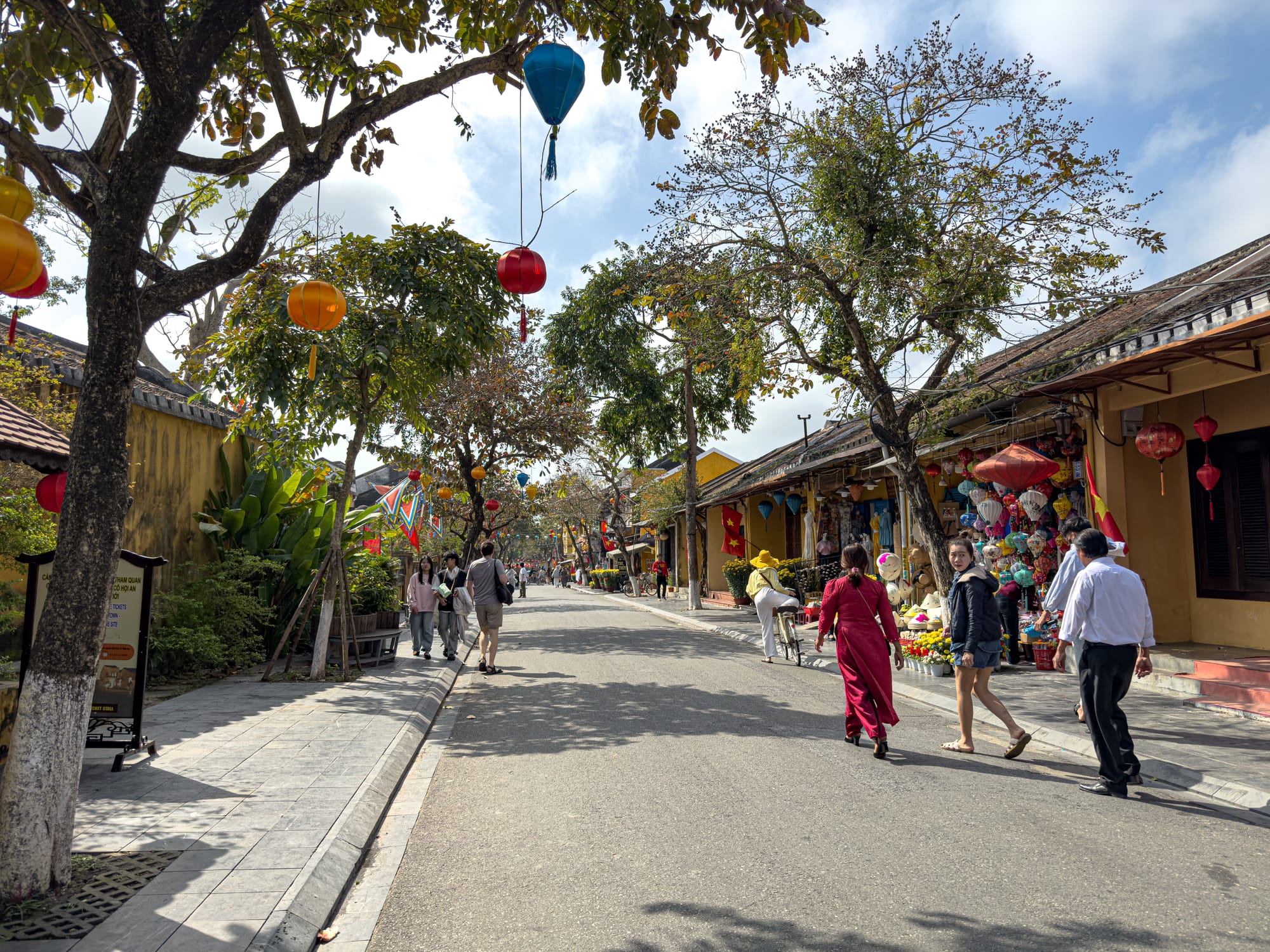
Walking its ochre-colored streets, one sees wooden merchant houses still intact, ancient wells still in use, and family-run businesses continuing practices generations old. The town’s heritage is not locked behind glass, but woven into daily life.
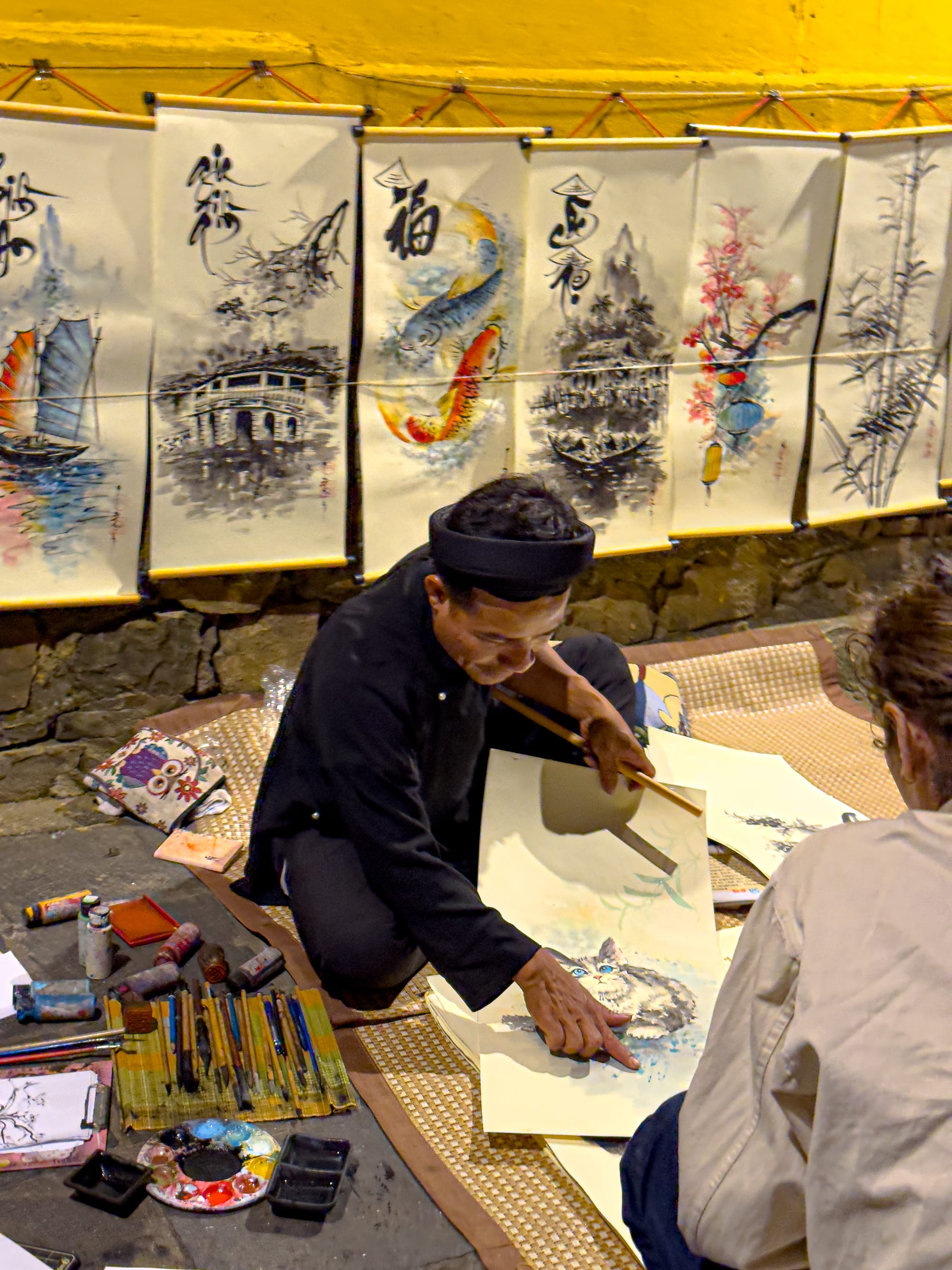
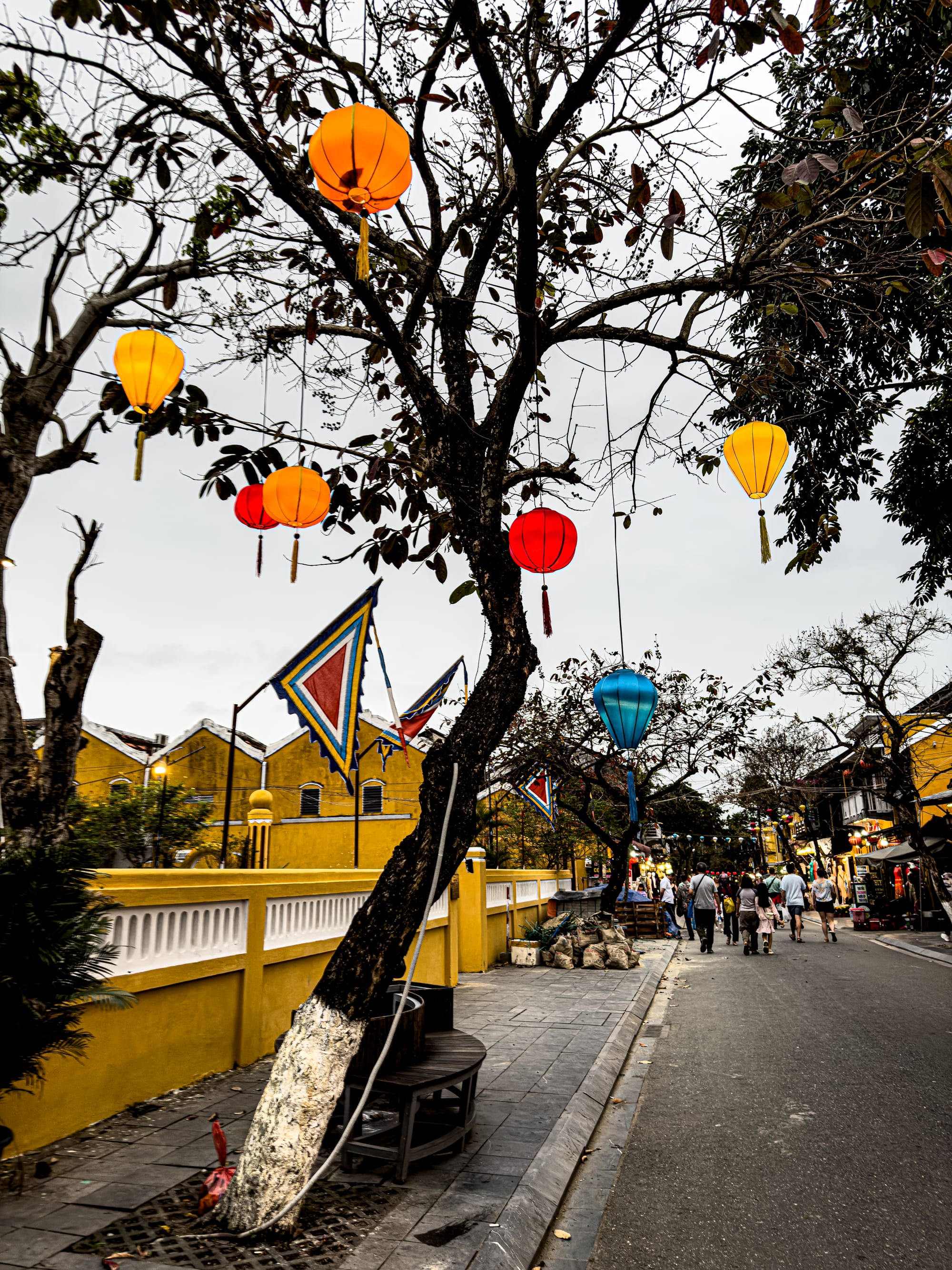
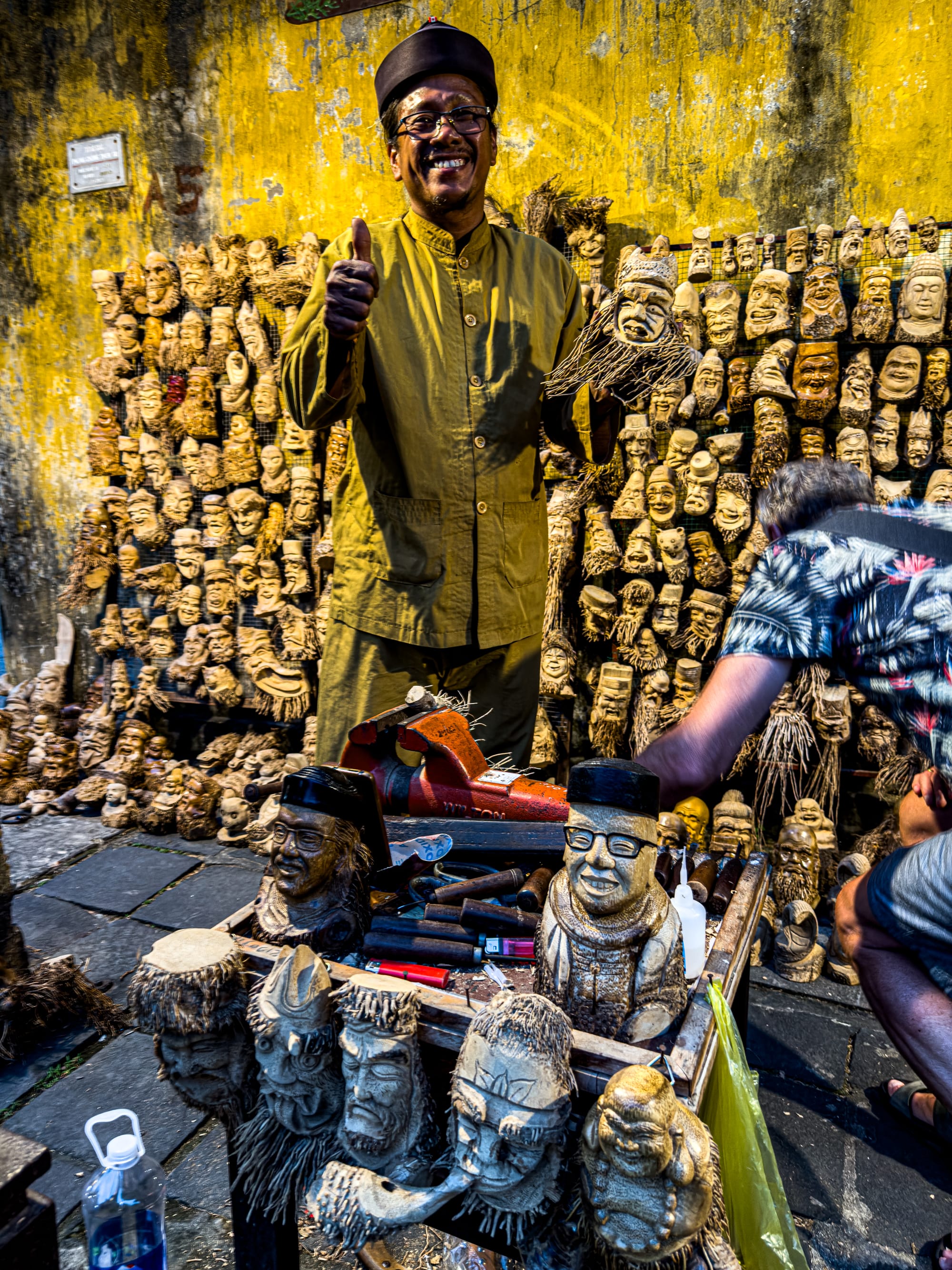
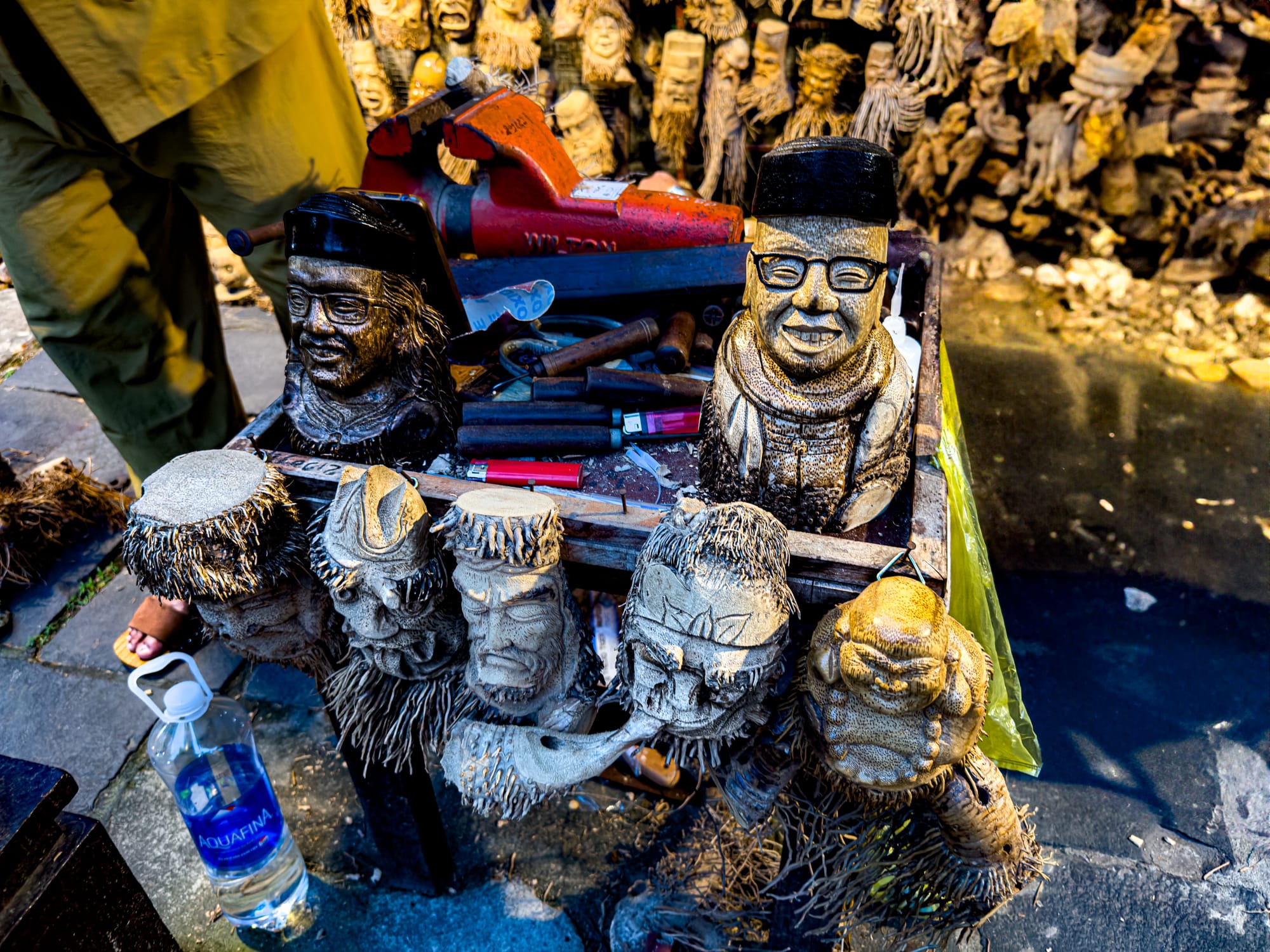
Artisans and street artists bring Hội An’s Old Town to life with paintings, carvings, and vibrant creativity
The decision to make much of the Old Town pedestrian-only enhances this atmosphere. With no cars allowed in certain zones, visitors can wander freely, hearing the clip of bicycle wheels on stone, the chatter of vendors, and the occasional ringing of temple bells. It creates an intimacy that is rare in modern Vietnam: a place where time slows and each step feels like a return to another era.
Lanterns: symbols of light and memory
Lanterns are perhaps the most enduring symbol of Hội An, capturing both its visual beauty and its cultural spirit. Their origins in the Old Town stretch back centuries, introduced by merchants from China and Japan who believed that hanging lanterns invited prosperity and good fortune. Over time, this practice was adopted by local families and gradually became inseparable from the identity of Hội An. Today, lanterns are not simply decoration; they are memory made visible, each one a fragment of the town’s long history of cultural exchange.
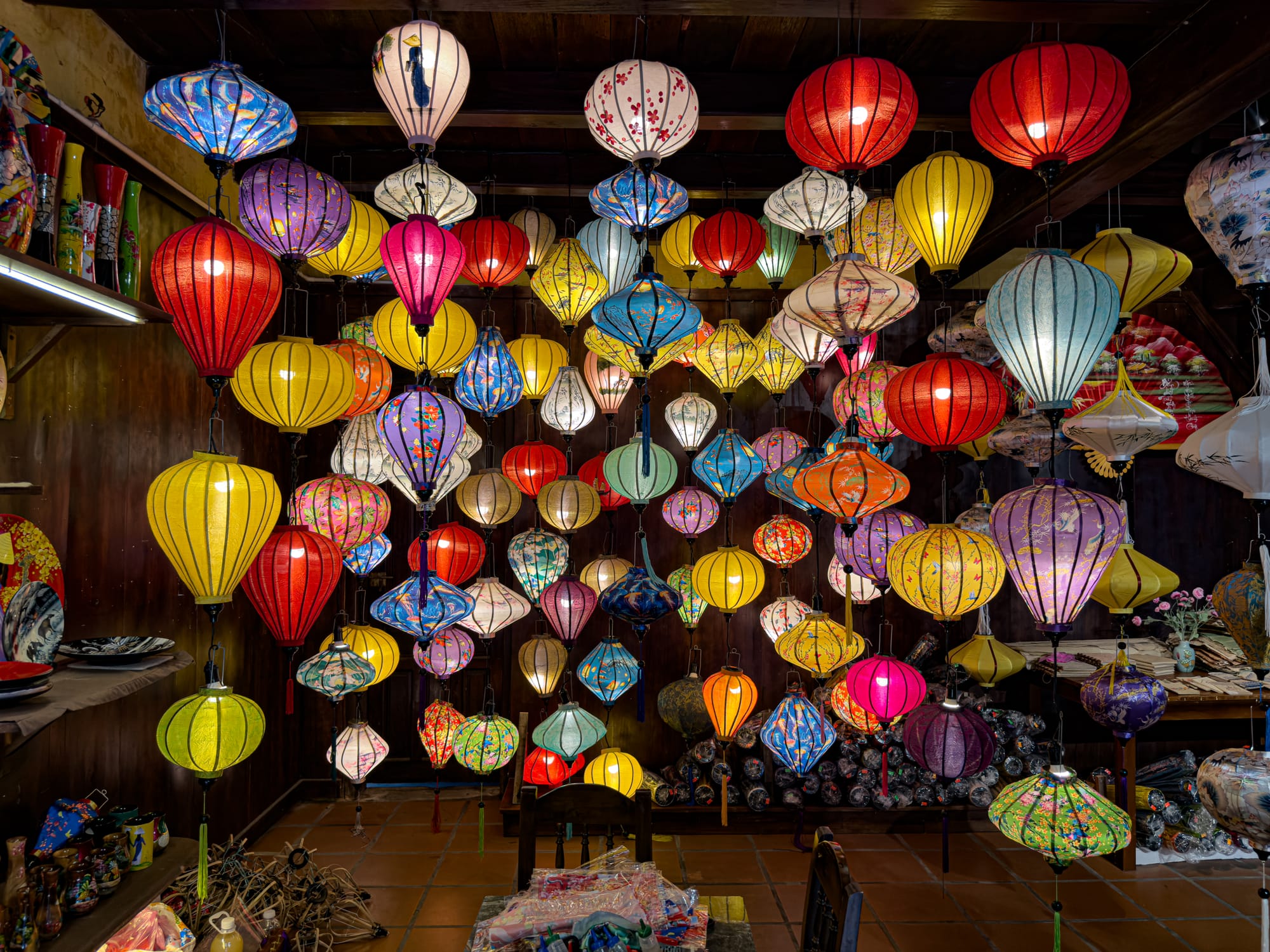
By day, lanterns create splashes of color above the narrow streets, strung between buildings, hanging in shopfronts, or glowing softly in temple courtyards. Their silk fabric, bamboo frames, and hand-painted motifs recall a craft that has been practiced for generations. They are as much a part of the architecture as the ochre walls and tiled roofs, softening every street with brightness and charm.
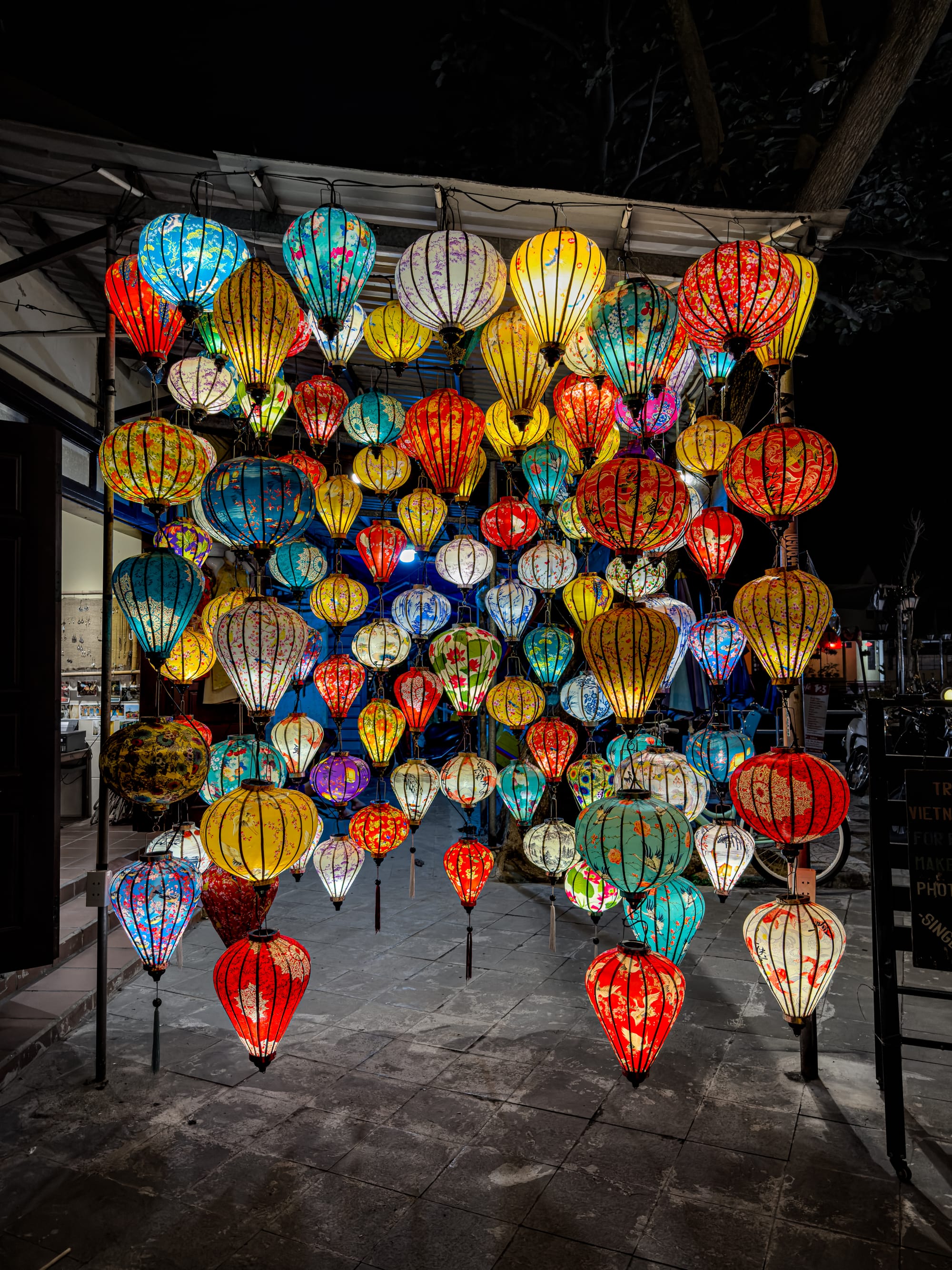
The monthly Lantern Festival heightens this experience. On the 14th day of the lunar month, the Old Town dims its electric lights and relies solely on lantern glow. The effect is breathtaking: an ancient town illuminated only by handmade light, filled with music, prayer, and celebration. This ritual links past to present, reminding both locals and travelers that Hội An’s beauty is not only visual but also spiritual.
If you'd like to learn how to make a Vietnamese-style lantern, we recommend this short class taught by locals.
Cafes and coffee culture
One of the pleasures of Hội An’s Old Town is its abundance of cafes, each with its own character. These are not just places to grab a quick cup of coffee, but small sanctuaries where history and leisure meet. Many cafes are set inside beautifully preserved merchant houses, with dark wooden beams, antique furniture, and views onto shaded courtyards. Others embrace a more contemporary aesthetic while still blending into the Old Town’s architectural rhythm, offering open balconies that overlook streets strung with lanterns. The act of pausing for coffee here becomes part of the Old Town’s experience: a way of lingering, of taking in the slow pace of life around you.
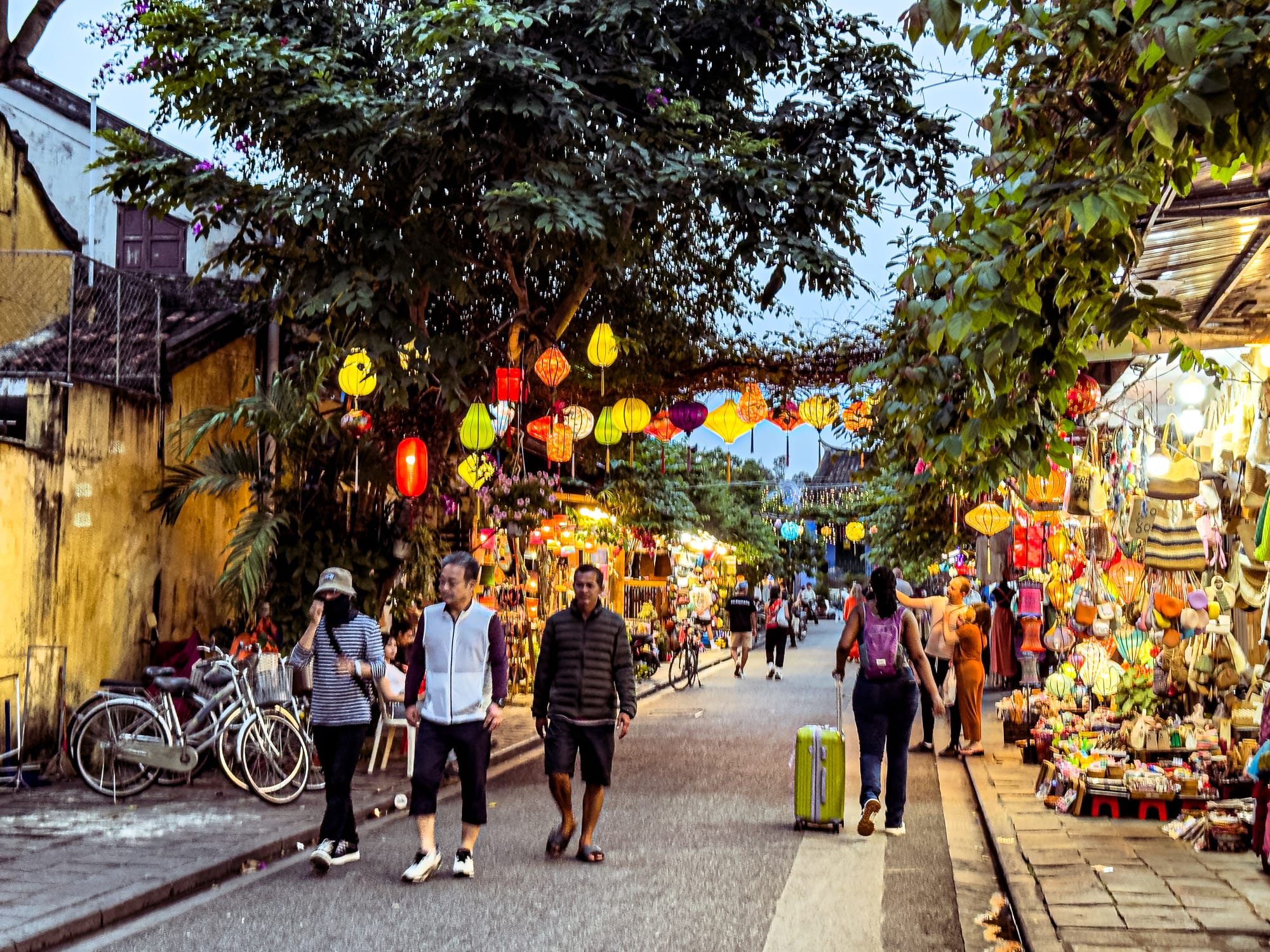
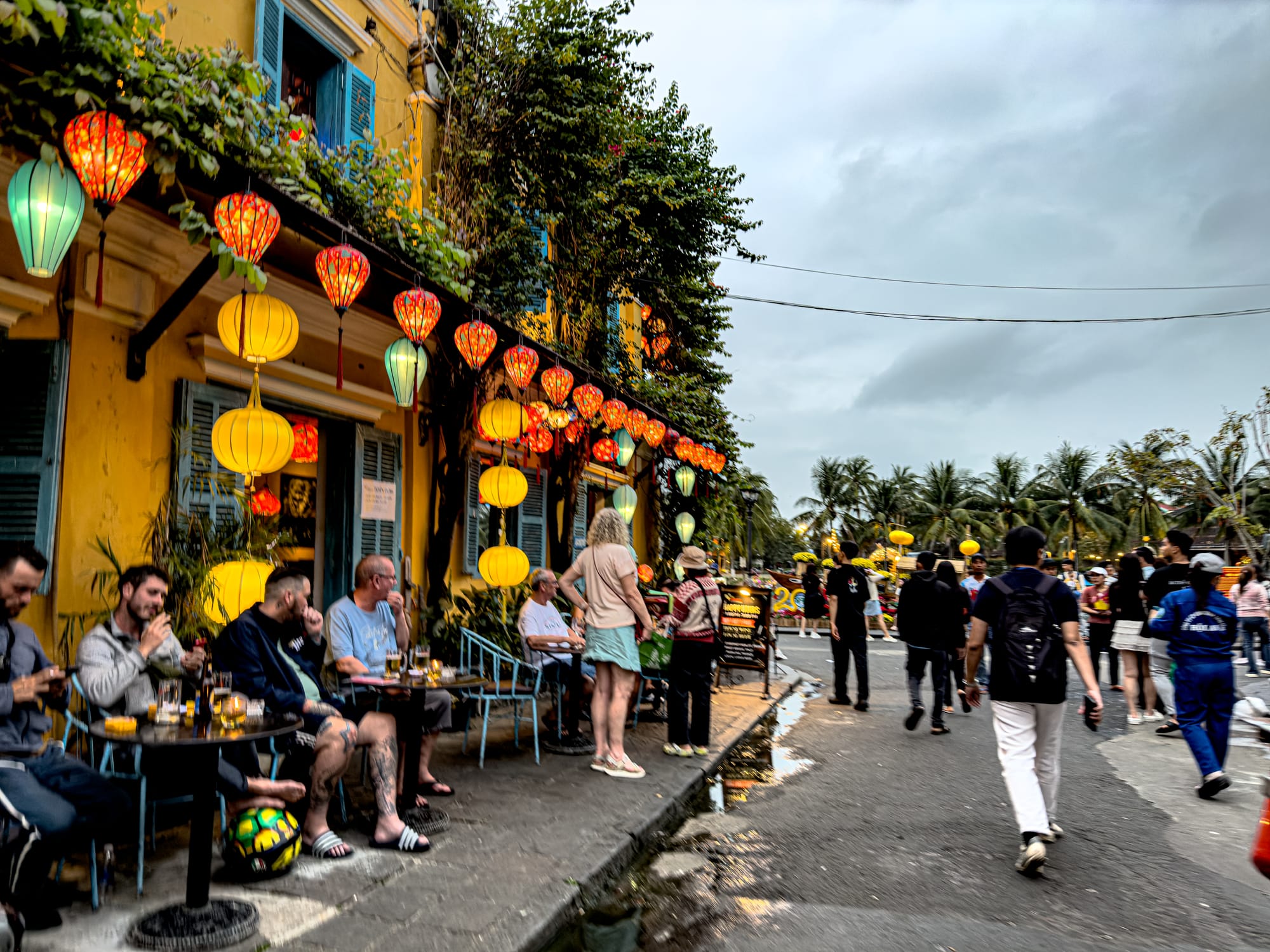
Evenings in Hội An’s Old Town glow with lanterns as streets, cafes, and riverside pathways fill with life
Coffee itself is part of Vietnam’s heritage. Introduced during French colonial times, it has since been transformed into a uniquely Vietnamese tradition. In Hội An, you can find everything from strong, bitter cà phê đen (black coffee) to the indulgent coconut coffee topped with sweet froth. Many cafes also offer traditional herbal teas or modern smoothies, catering to both locals and travelers. But it is not only about the drinks—the ambiance of these cafes is what makes them essential to the Old Town.
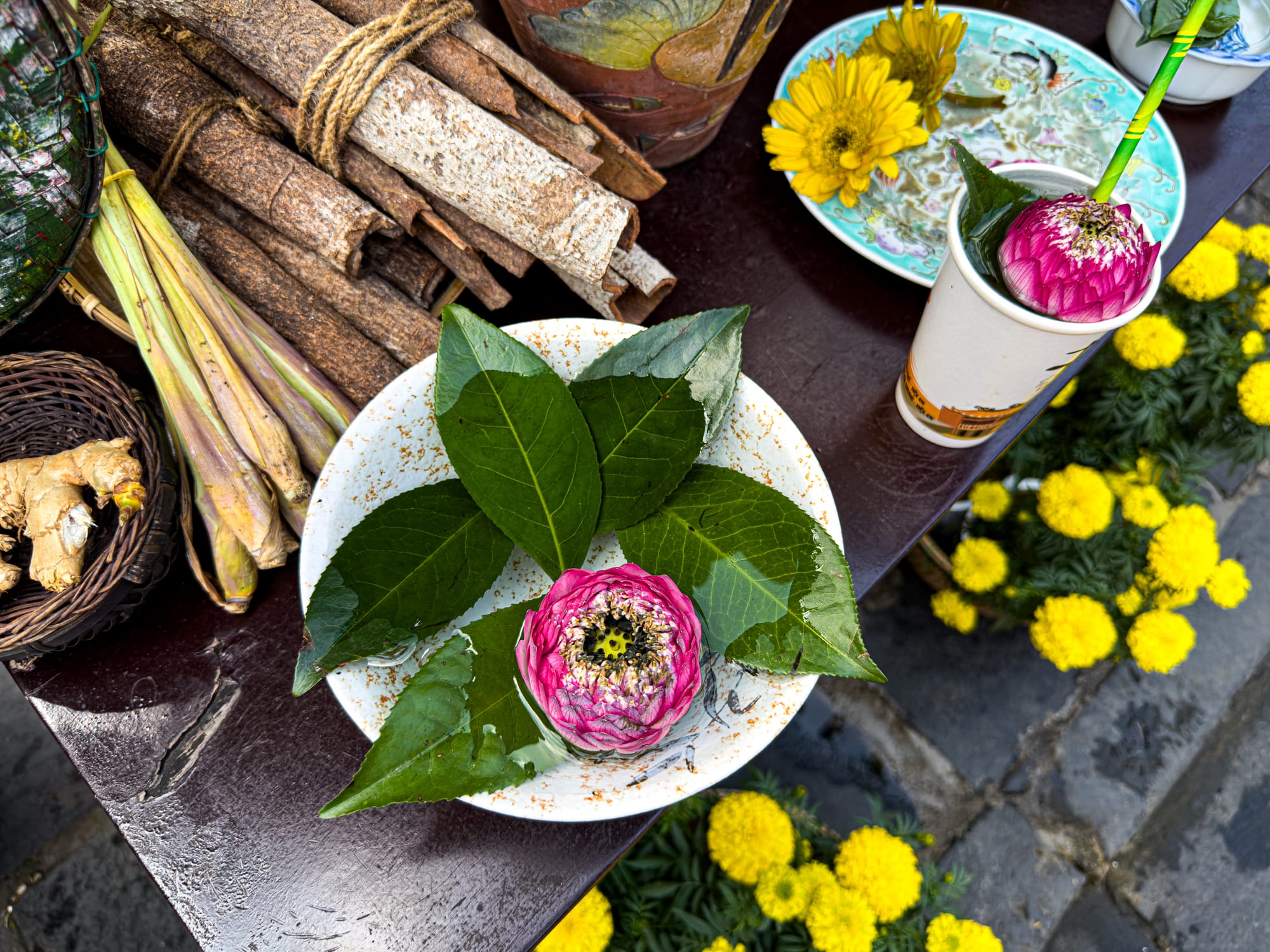
Apart from cafes, you'll also find vendors selling other creative drinks.
Tailors and tradition
Hội An is famed for its tailoring, and the Old Town is at the heart of this tradition. Walking through its streets, one encounters tailor shops at nearly every turn, each filled with rolls of fabric, mannequins dressed in suits and gowns, and tailors ready to measure and advise. The origins of this craft reach back to the days when Hội An was a trading hub for silk and textiles, particularly with Chinese and Japanese merchants. The town became a place where fabrics from across Asia converged, and the skills to transform them into garments were honed and perfected. Over time, Hội An’s tailors built a reputation for quality, efficiency, and adaptability that continues today.
To order clothing here is to enter into a dialogue. Travelers bring ideas or even just a photo, and tailors turn them into reality, often within a day or two. The speed is impressive, but it is matched by the skill. Silk dresses flow with elegance, linen shirts breathe in the heat, and suits are cut with surprising precision given the timeframes. More than commerce, tailoring in Hội An is a continuation of craft, an inheritance from ancestors who understood fabric as both material and art. Commissioning a piece here means carrying away more than clothing—you take with you a story, a link to the town’s mercantile history, and a reminder of its ability to shape global trade into local artistry.
Lanterns and the night river
Lanterns are the soul of Hội An’s Old Town. By day, they decorate streets, shops, and courtyards with bright bursts of silk in every color. By night, they transform the town into a dreamscape. As dusk falls, the lanterns are lit, casting a soft glow across ochre walls and cobblestone streets. Their colors reflect on the water of the Thu Bồn River, where boats glide by, their wooden hulls carrying couples, families, and travelers captivated by the scene. It is an atmosphere that feels timeless, as if stepping into a painting where light and water merge.
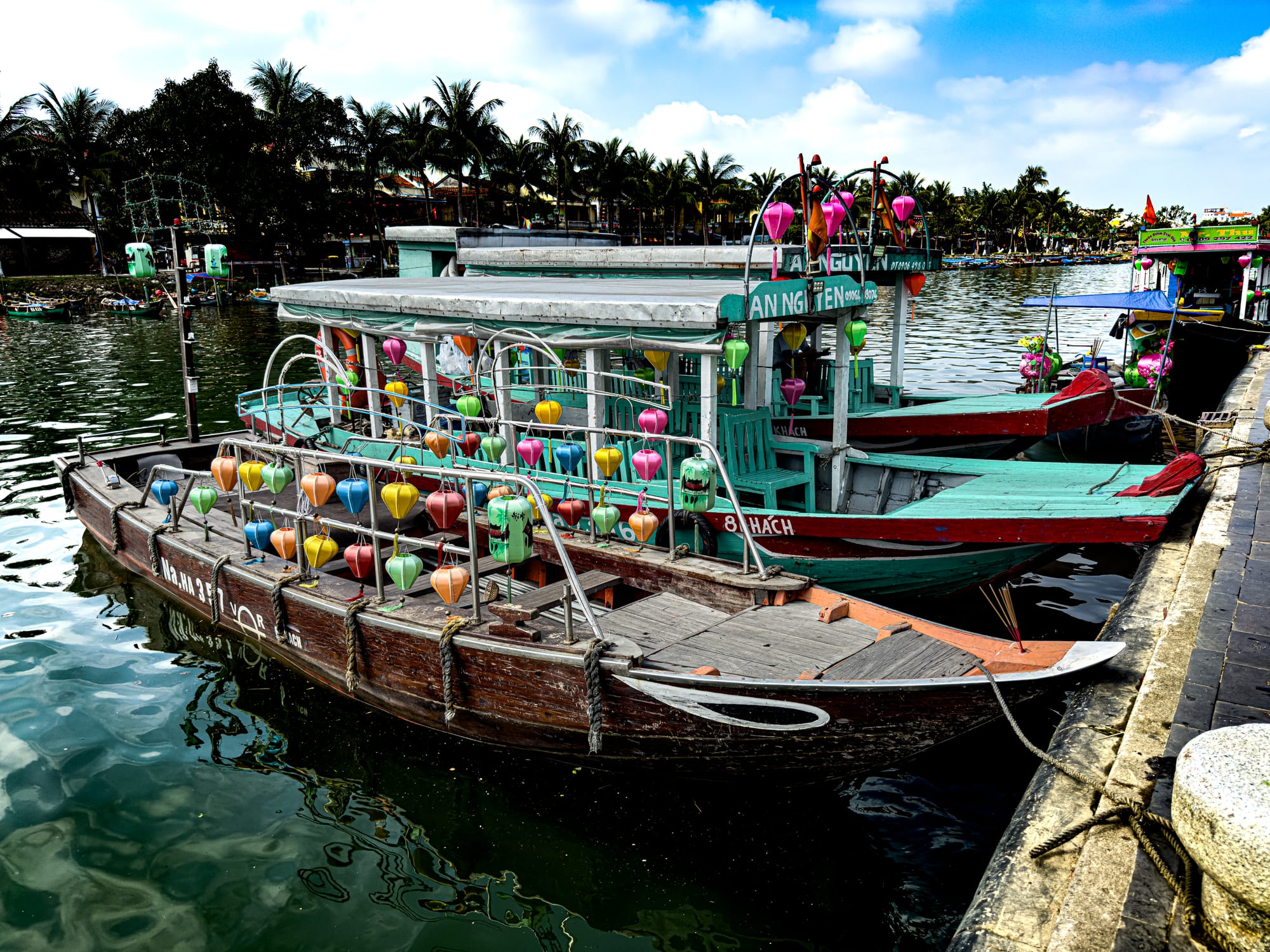
The tradition of lantern lighting in Hội An dates back to the 16th century, introduced by Chinese and Japanese traders who believed lanterns brought prosperity and good fortune. Over time, the practice was absorbed into local culture, evolving into the vibrant lantern festivals and nightly rituals we see today. Visitors can purchase paper lanterns to release into the river, each carrying a wish as it drifts away with the current. Watching the river illuminated by hundreds of flickering lights is among the most poetic experiences Vietnam offers. It is a moment where spirituality, community, and beauty intertwine.
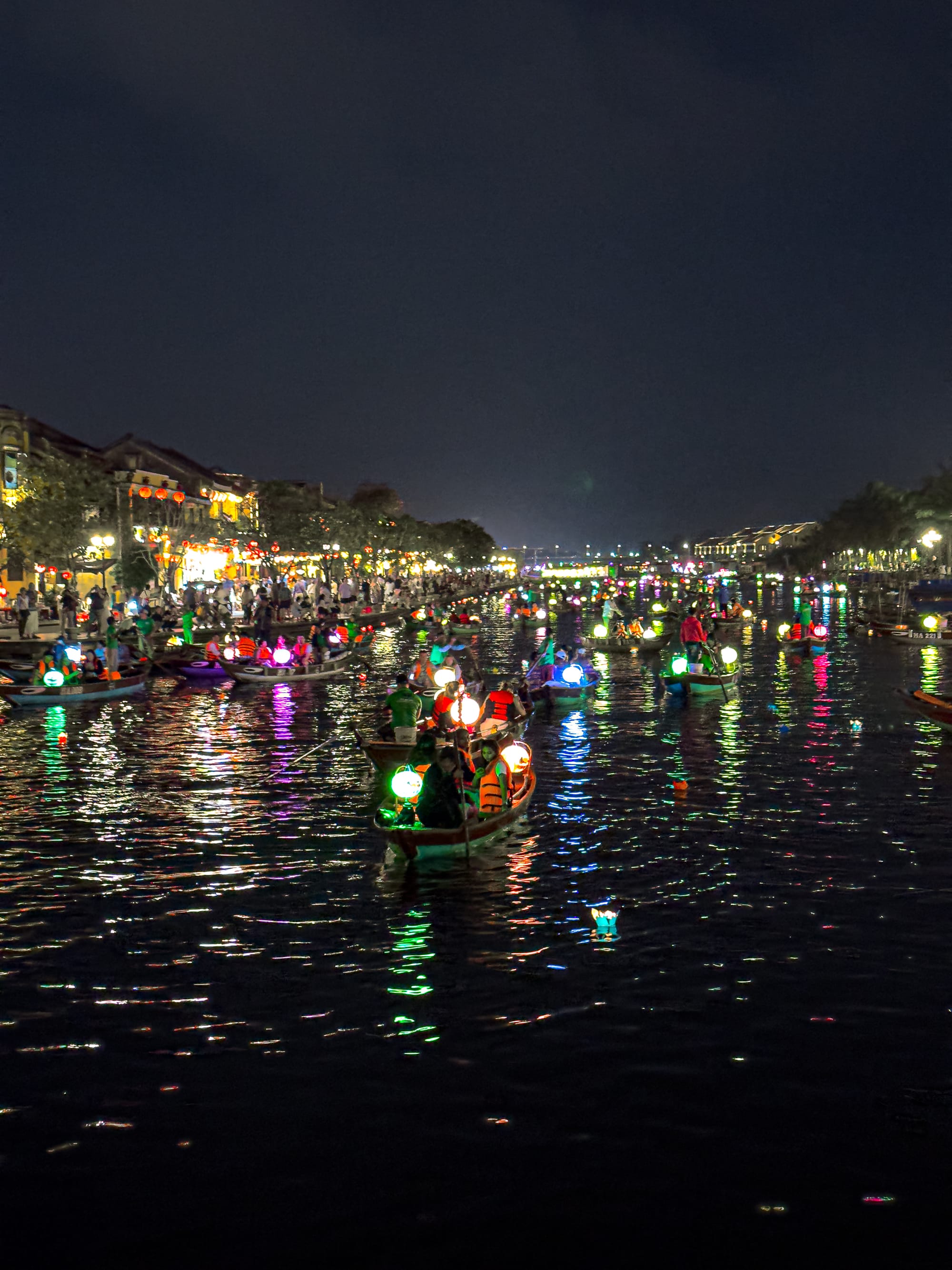
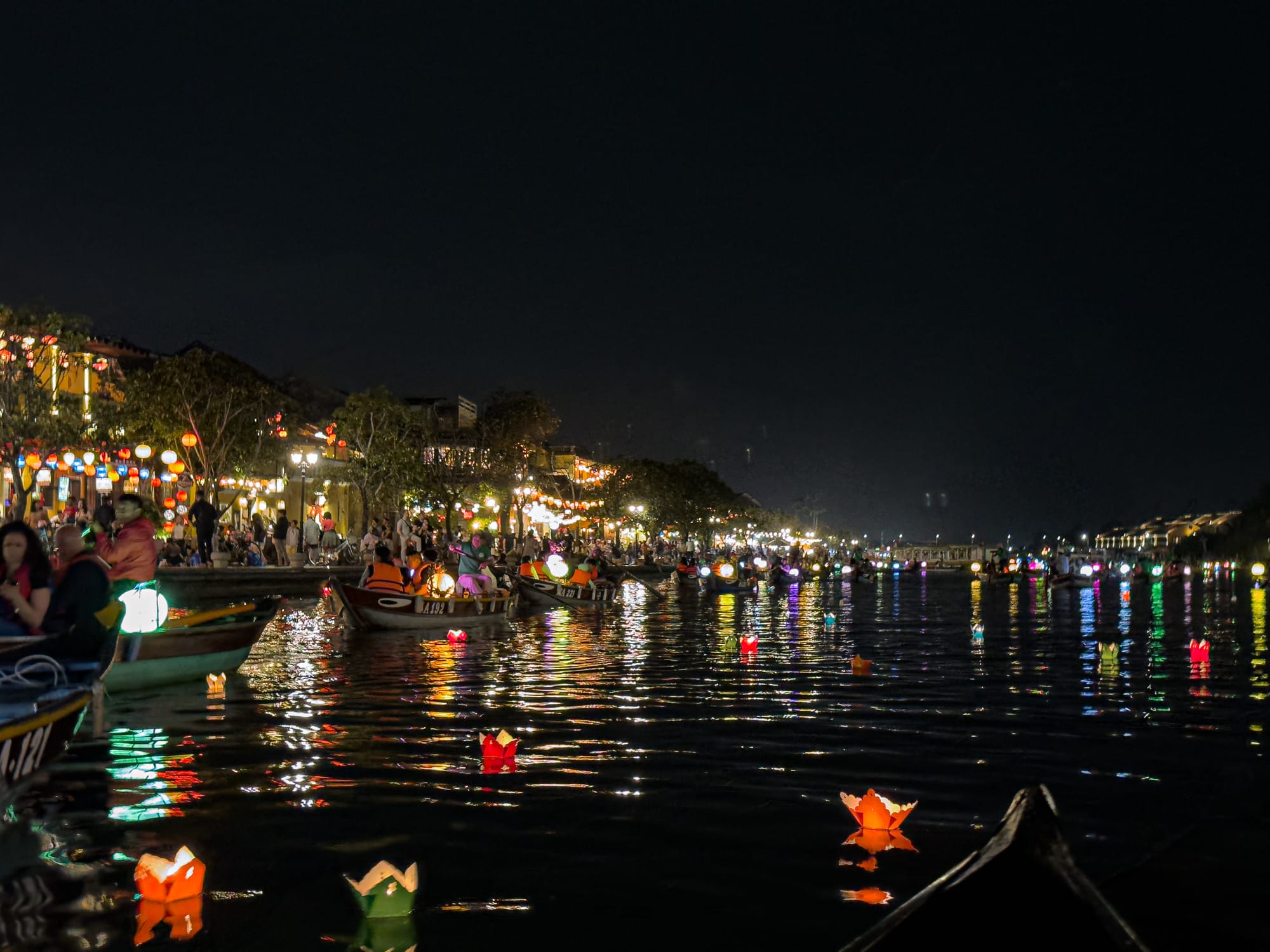
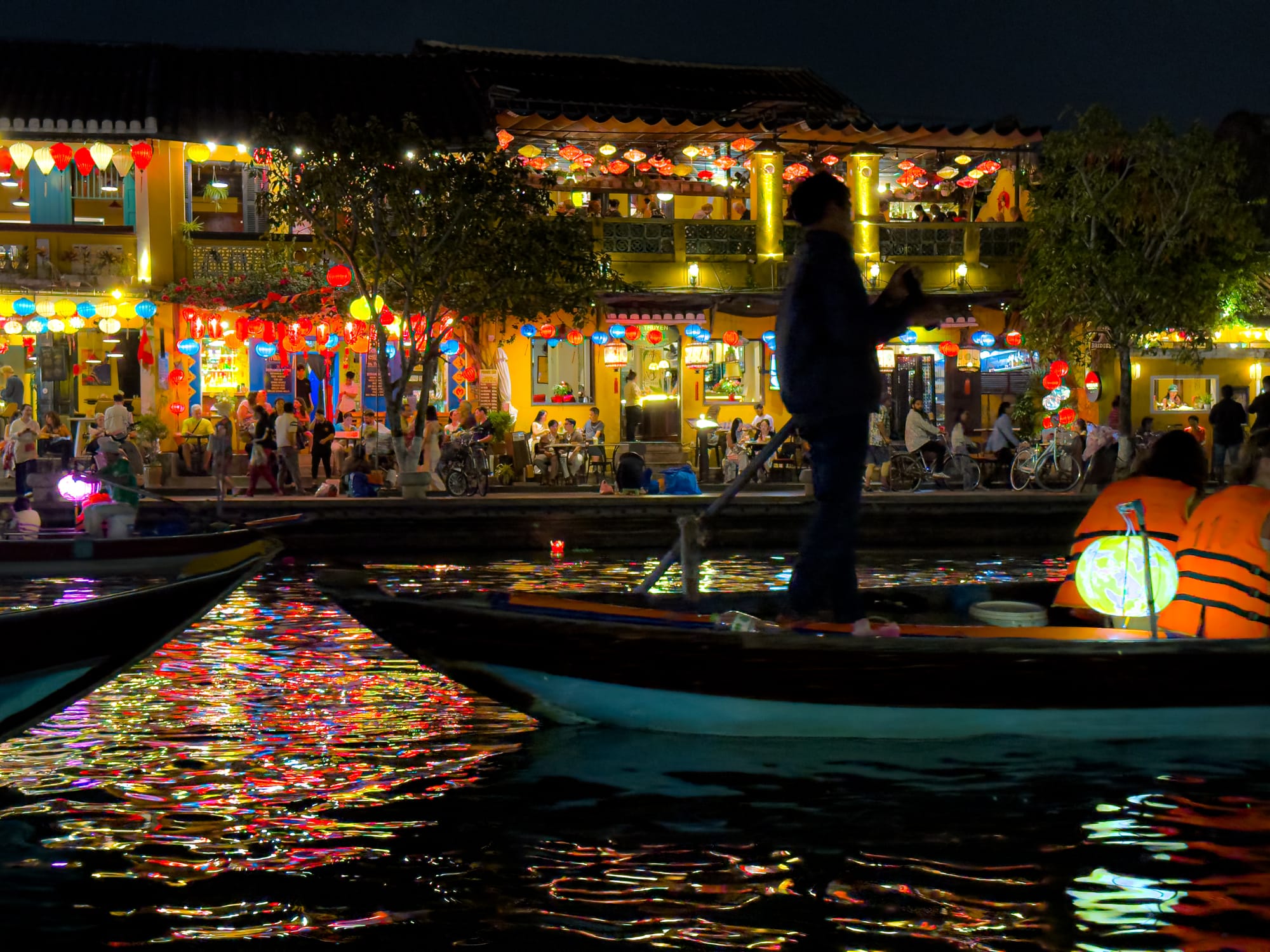
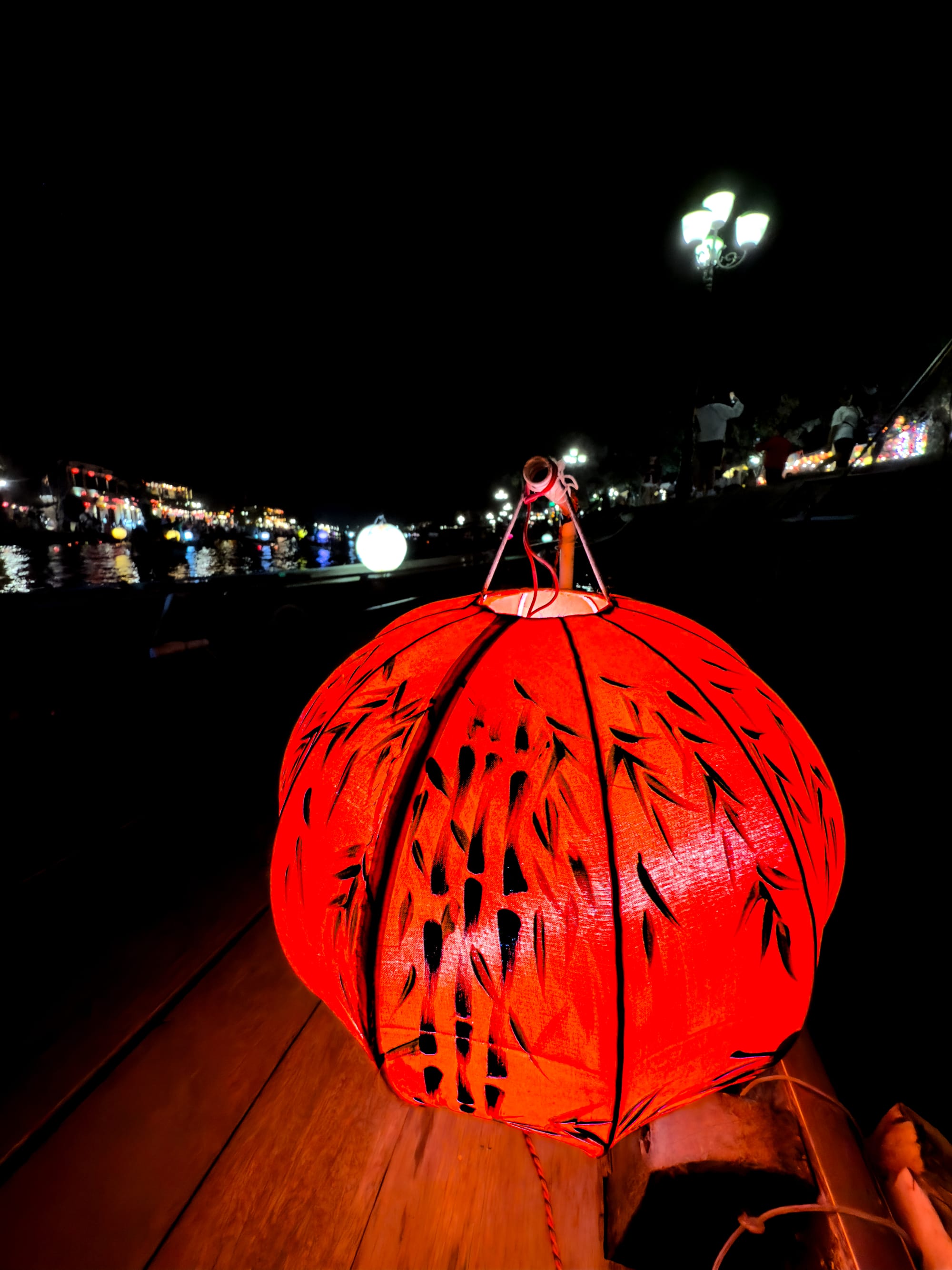
The Thu Bồn River sparkles with lantern boats and floating wishes during Hội An’s magical nights
For a deeper encounter, you can book a nighttime lantern boat ride. Floating through the Old Town as lanterns shimmer on the water gives the sensation of being inside a living myth. The glow reflects not only on the river but on the faces of those who ride, binding everyone into the shared wonder of the scene.
The Japanese Covered Bridge
The Japanese Covered Bridge, or Chùa Cầu, is one of Hội An’s most iconic landmarks. Built around 1593 by the Japanese community that had settled in Hội An, the bridge was both practical and symbolic. It connected the Japanese quarter on the western side of the town with the Chinese quarter on the eastern side, serving as a literal bridge between two powerful communities that defined Hội An’s prosperity. Its roof provided shelter from sun and rain, while its design reflected Japanese aesthetics infused with local Vietnamese influences.
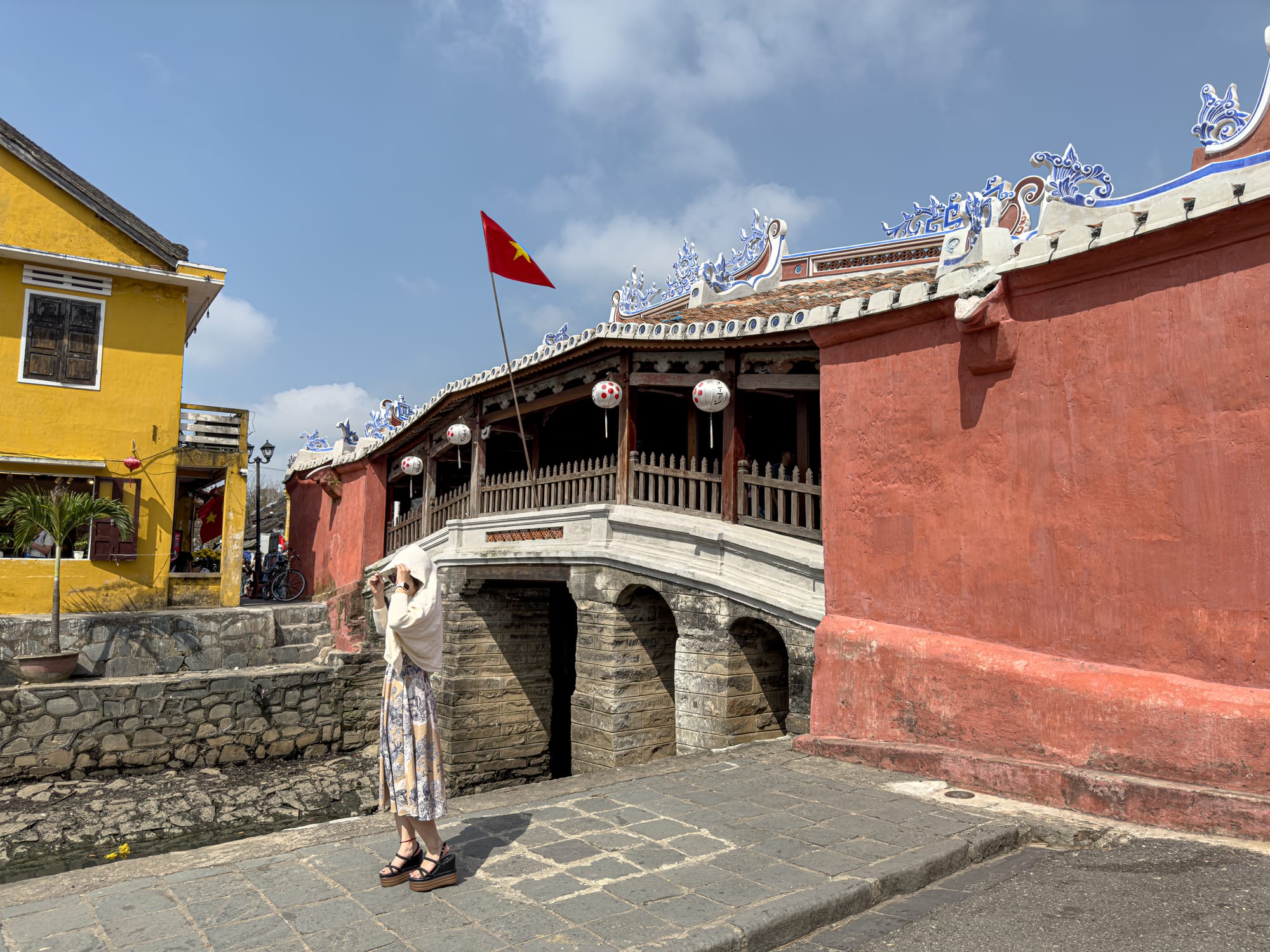
The bridge is guarded by statues of monkeys on one side and dogs on the other. Scholars suggest this may reference the years in which its construction began and ended according to the Chinese zodiac. Others see them as protective symbols, guardians of a space meant for unity and crossing. Inside the bridge is a small temple dedicated to the northern deity Trấn Vũ, believed to protect against natural disasters. This gave the bridge not only a functional role but also a spiritual one: a place of safety, blessing, and continuity.
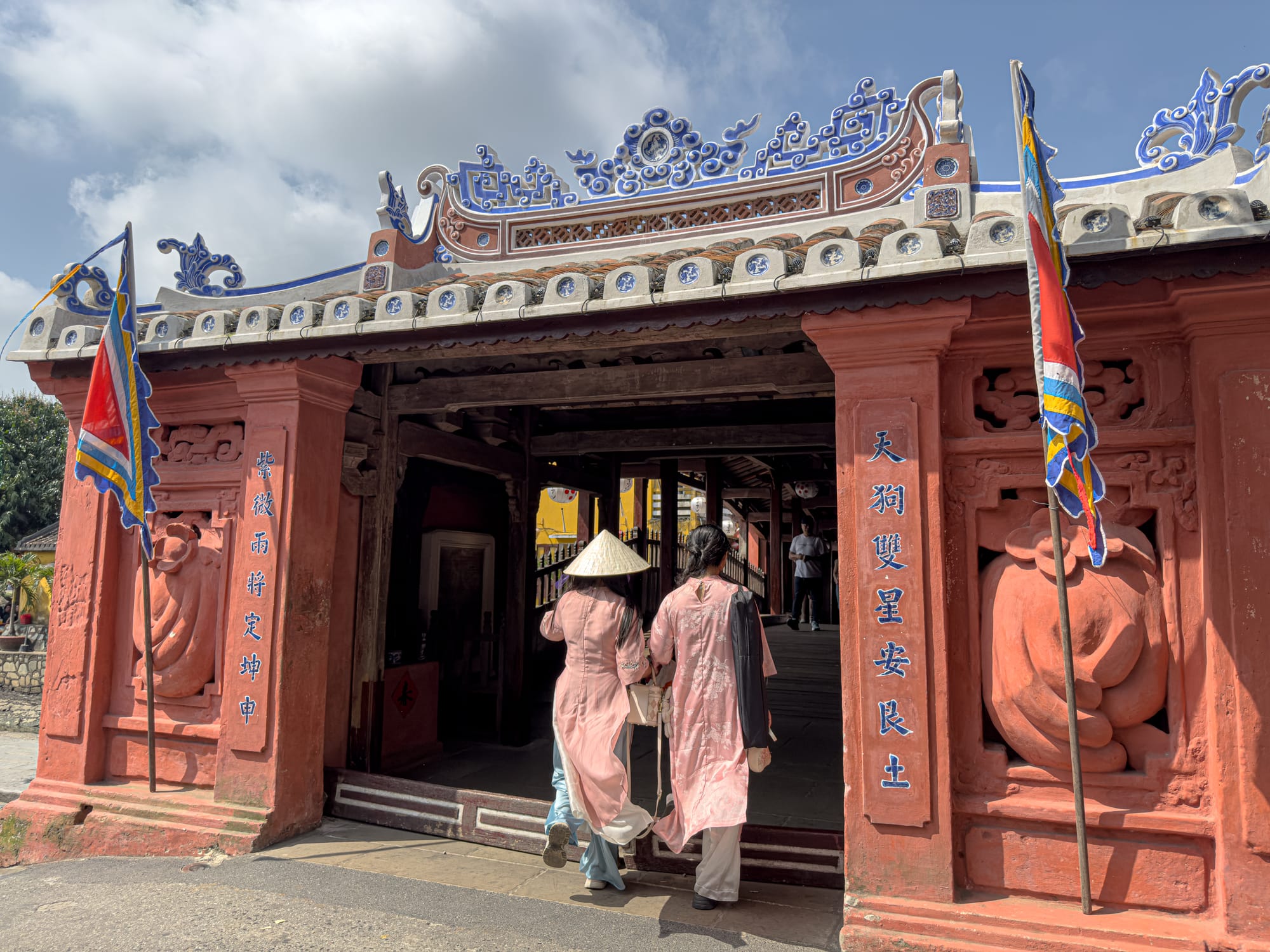
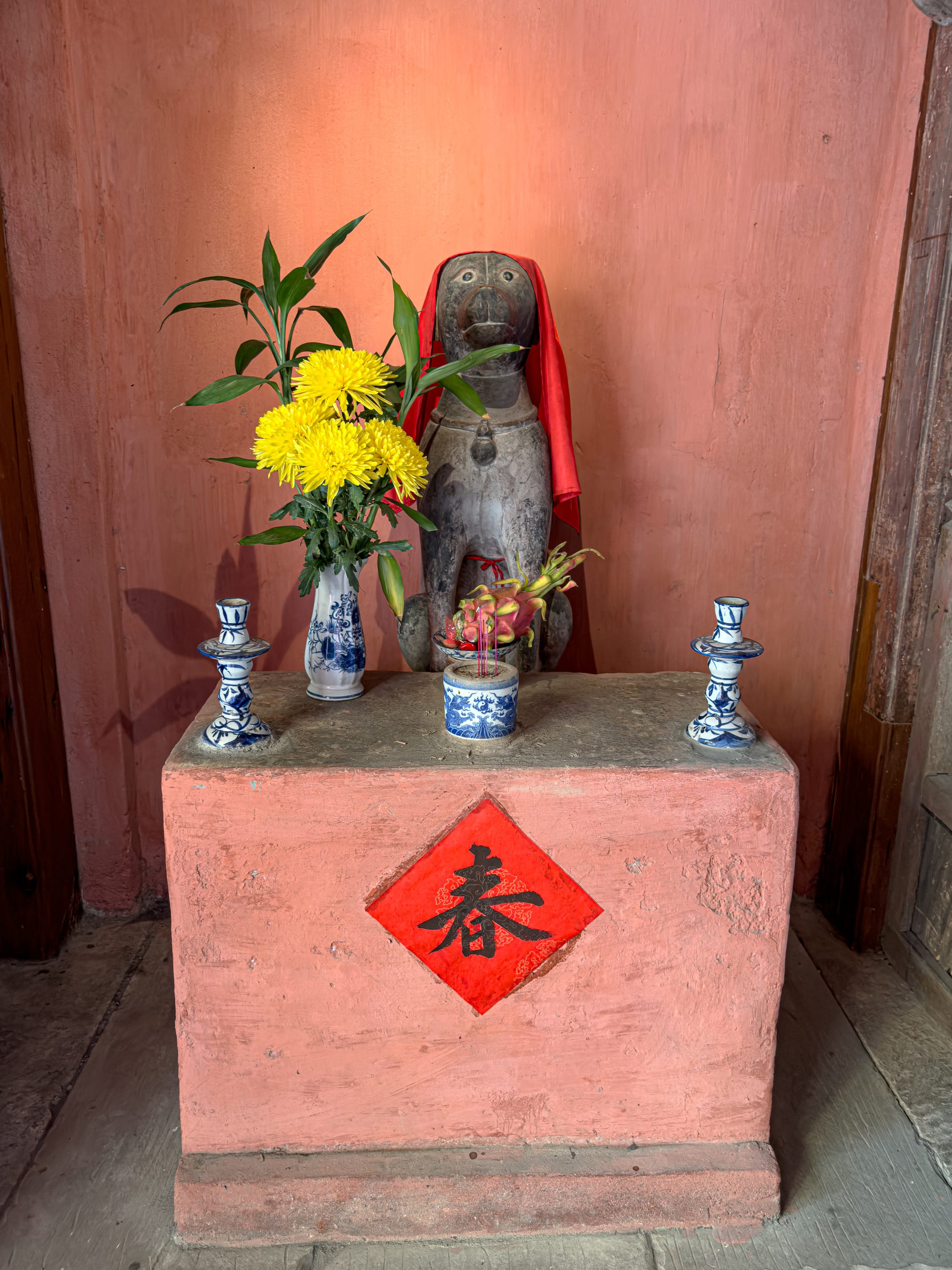
Stepping into Hội An’s Japanese Covered Bridge, where history, legend, and sacred guardians still endure
Over centuries, the bridge has been restored numerous times, yet it remains remarkably faithful to its original form. Today it is a symbol of Hội An itself, appearing on the town’s emblem. Walking across it, one feels the layering of history—the footsteps of Japanese merchants, the prayers of locals, the quiet presence of a town that thrived on exchange. It is not only an architectural marvel but a testament to Hội An’s cosmopolitan past and its enduring identity as a meeting place of cultures.
The Chinese assembly halls
Equally significant to Hội An’s story are the Chinese assembly halls scattered throughout the Old Town. These were built from the late 16th century onwards by Chinese immigrant communities, each group representing a different province such as Fujian, Canton, Hainan, and Chaozhou. The halls served as social, cultural, and spiritual centers, places where Chinese settlers gathered to preserve traditions, worship deities, and support one another in a foreign land.
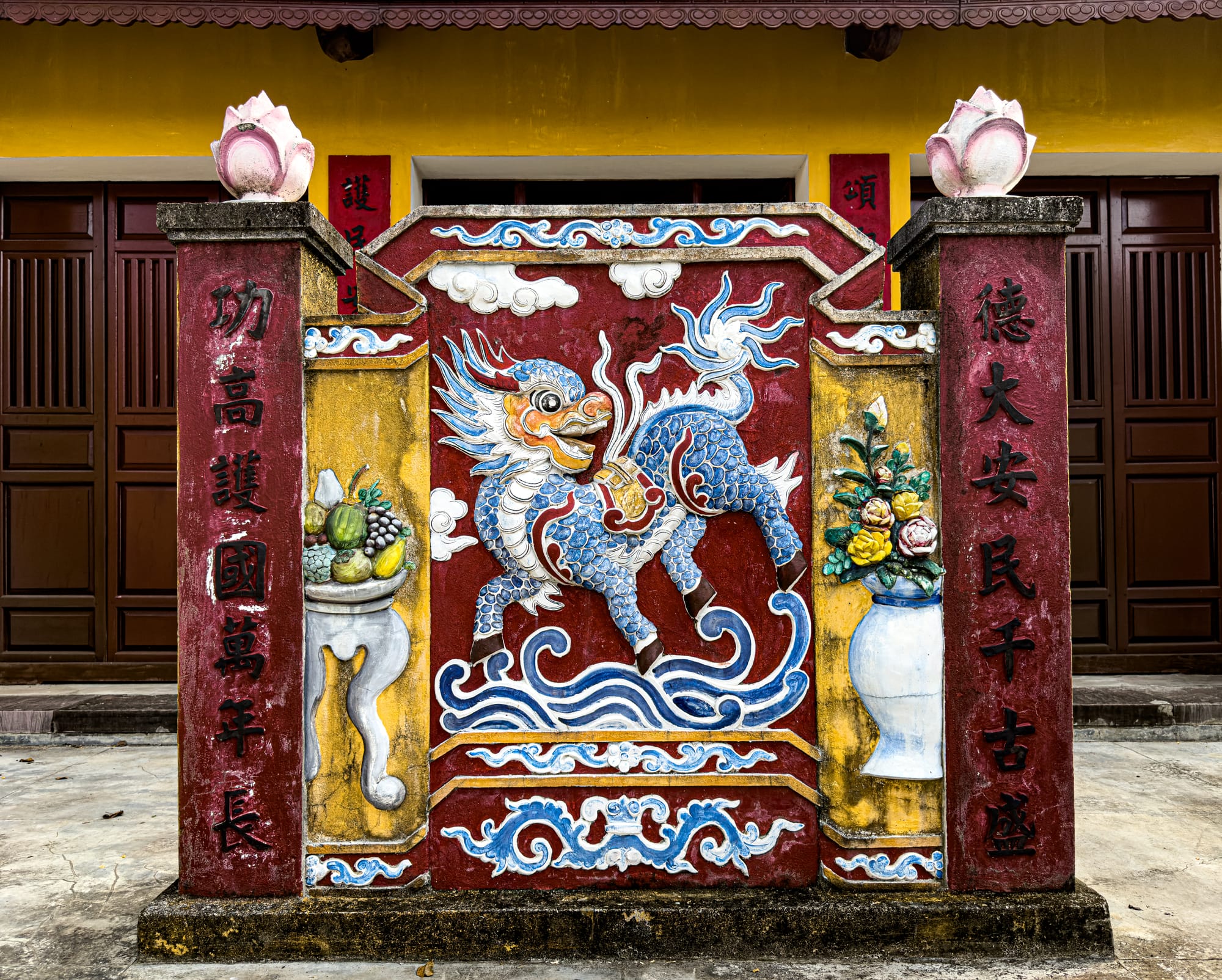
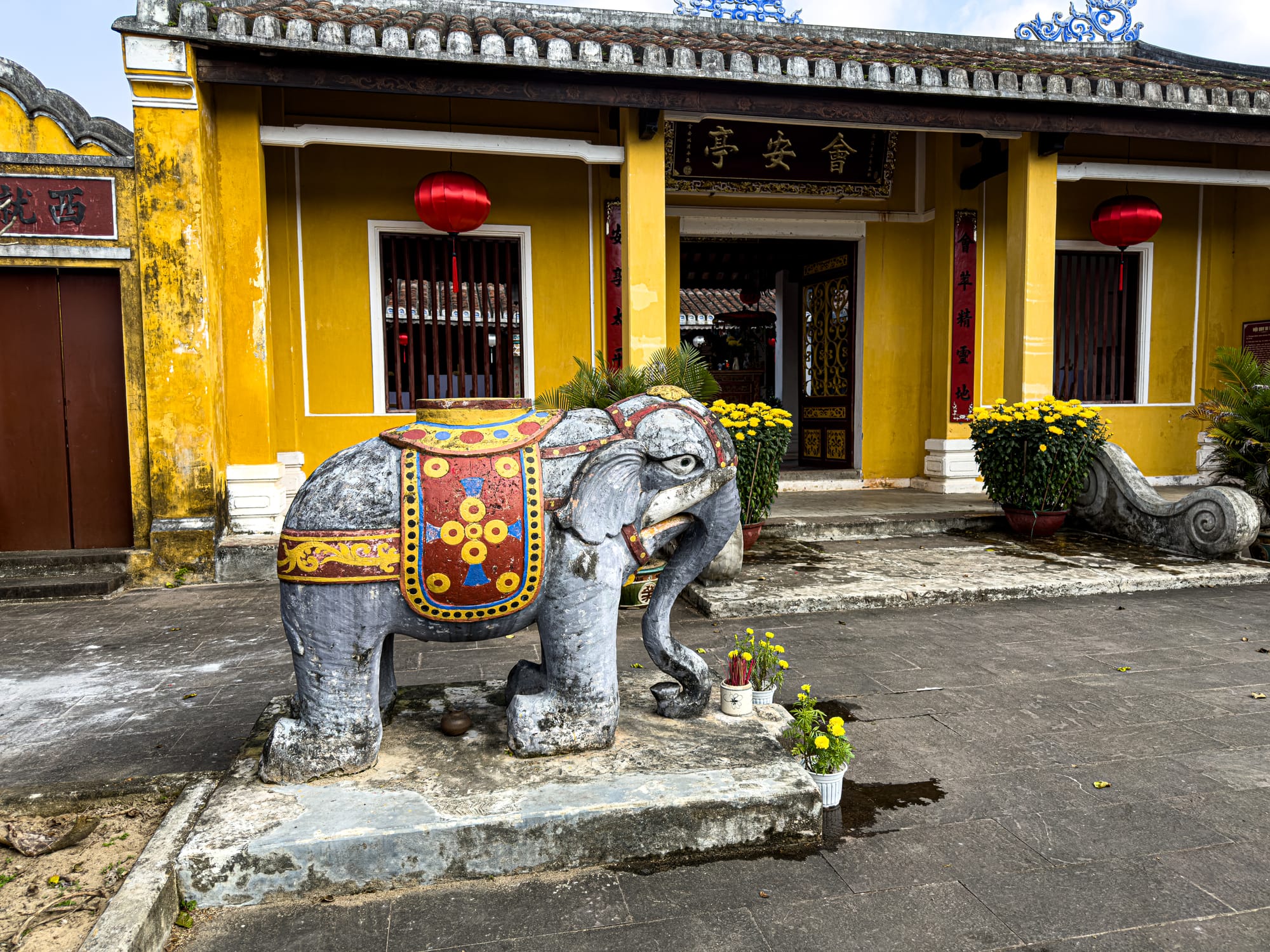
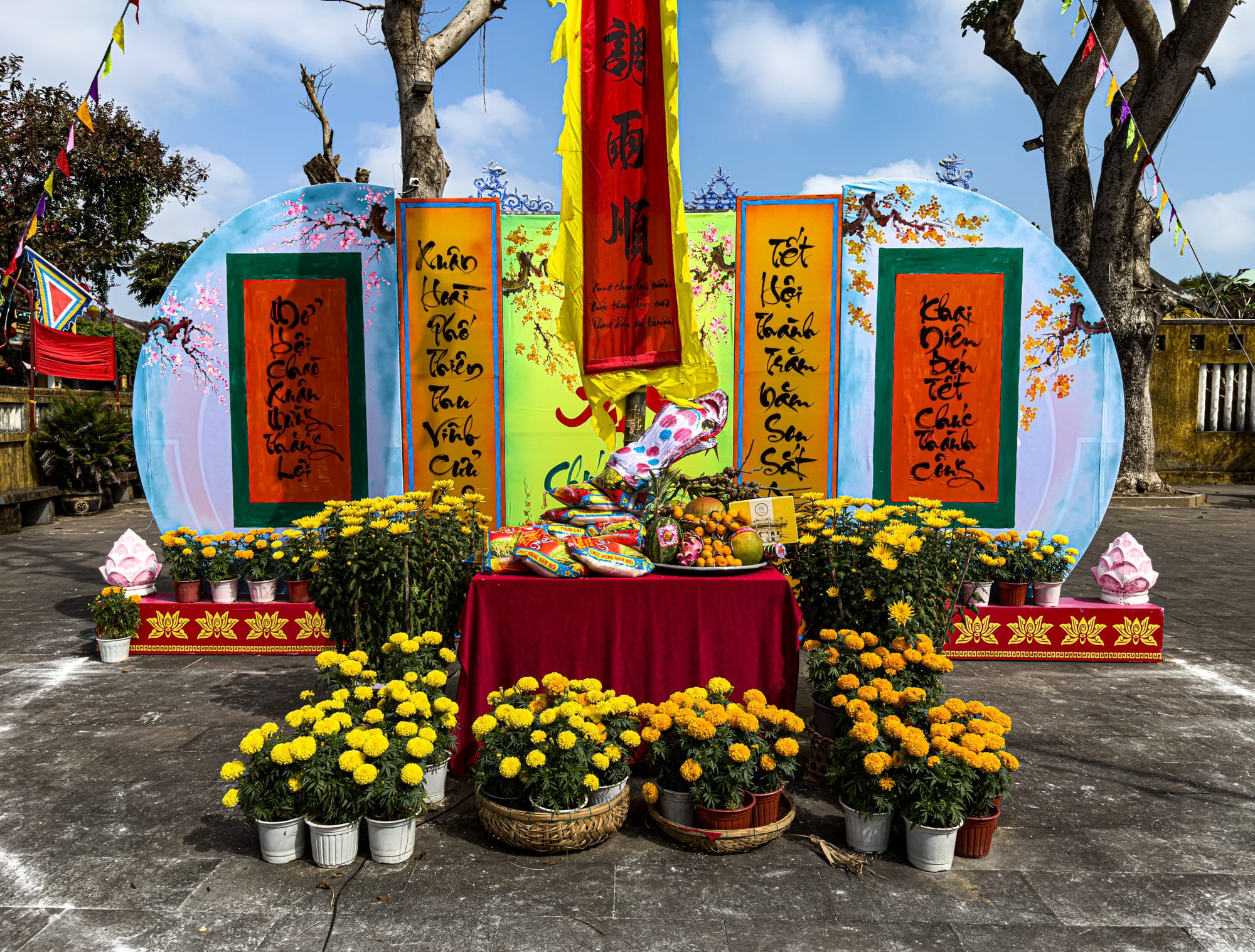
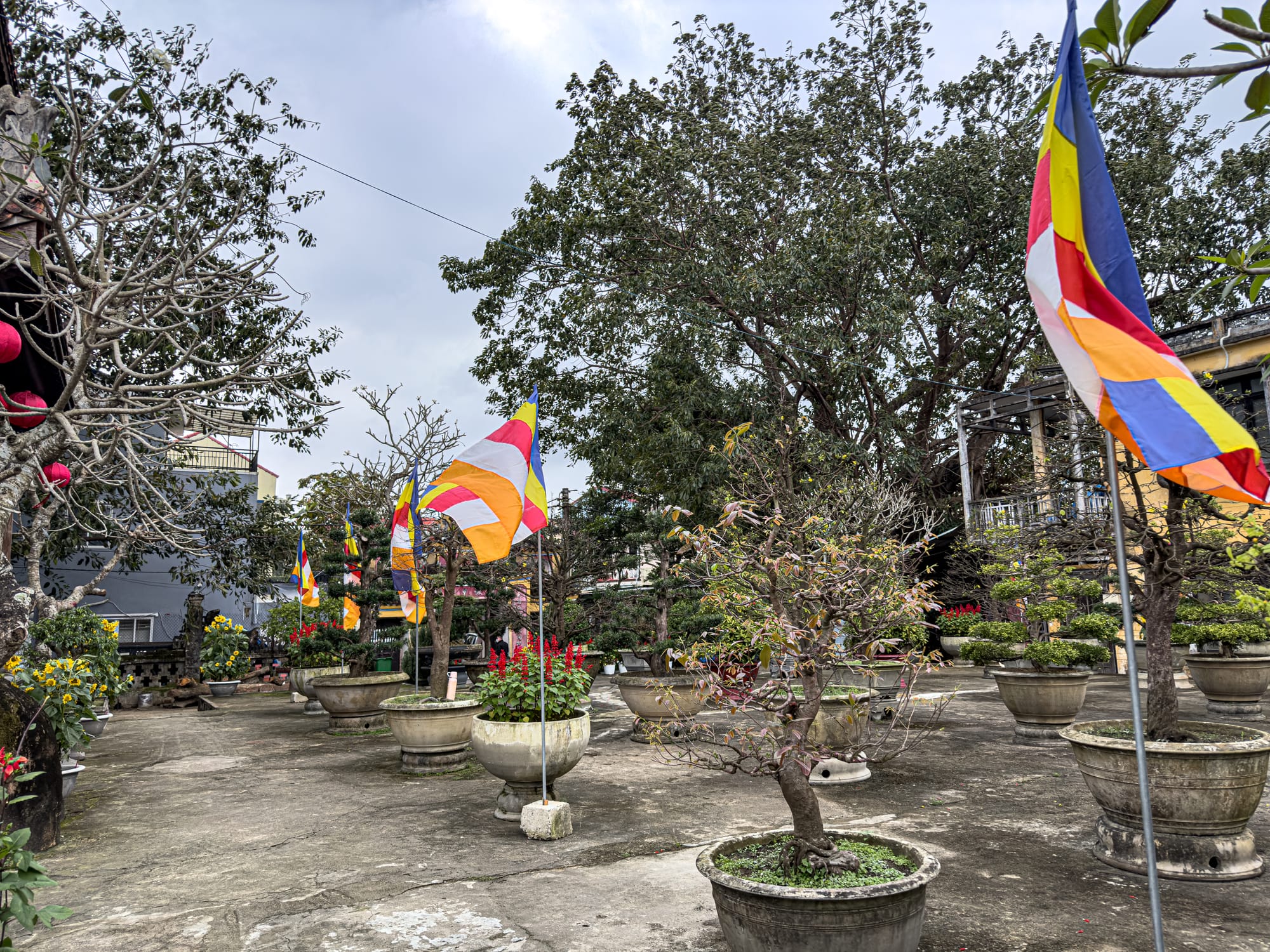
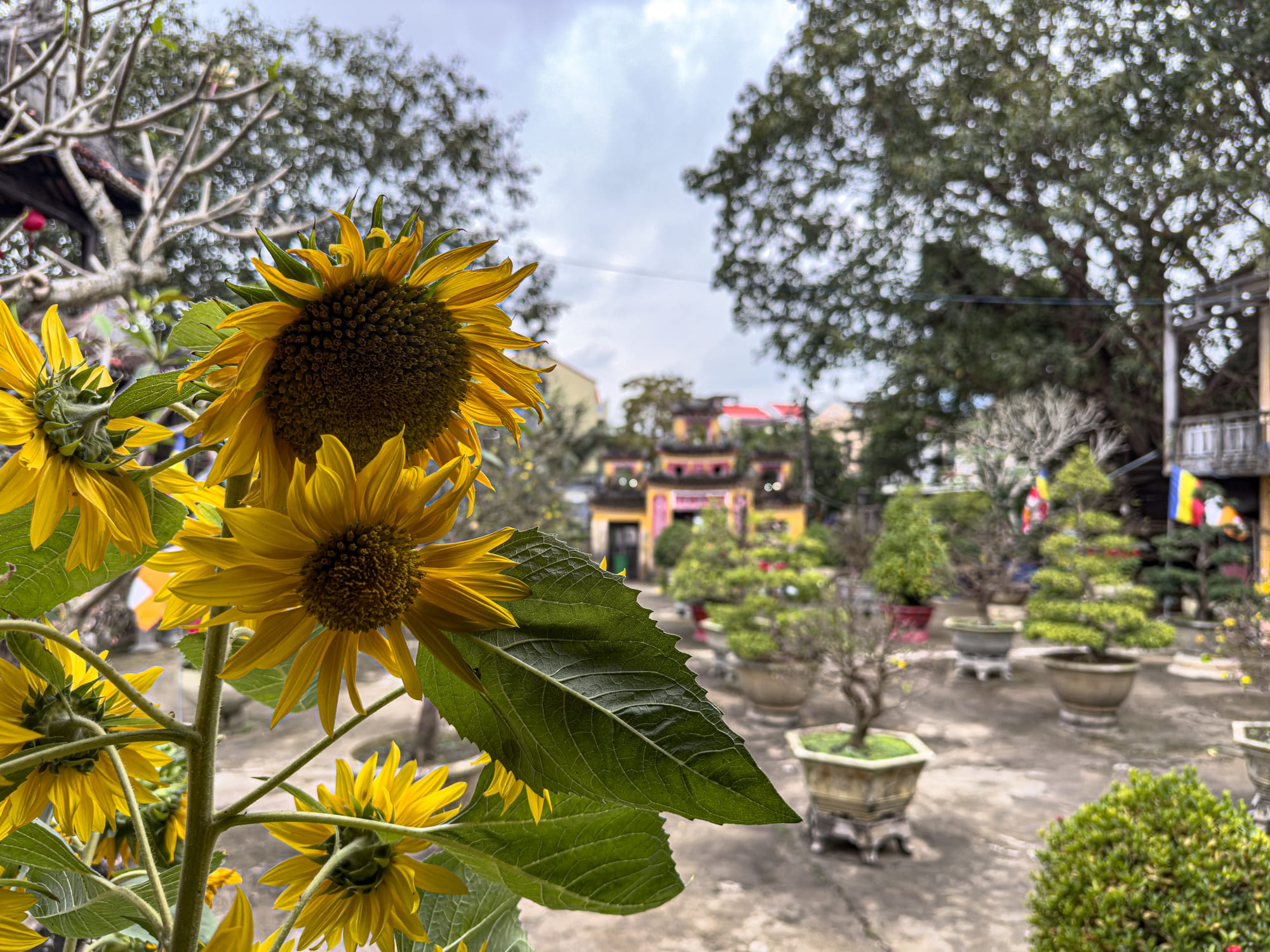
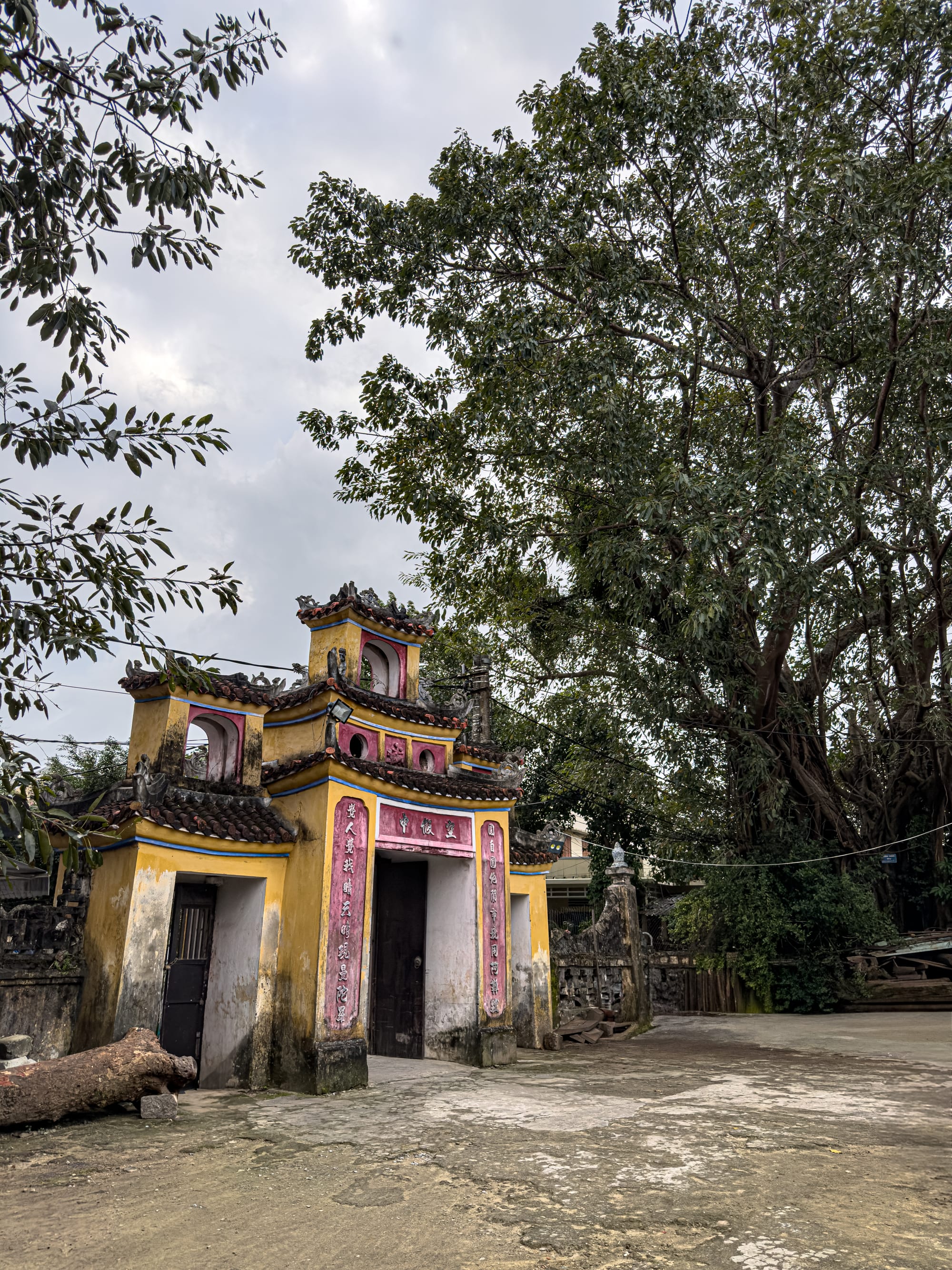
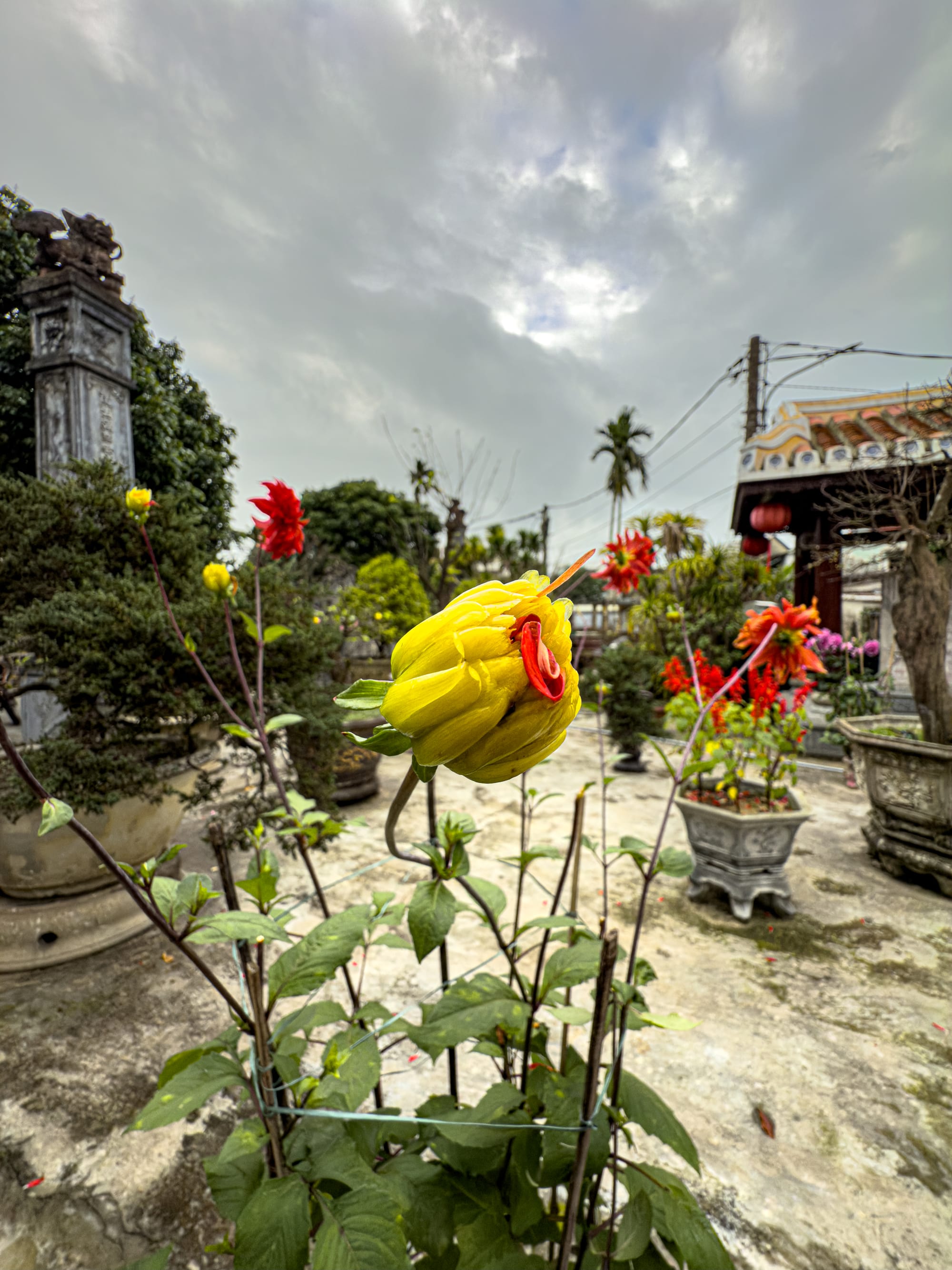
Gardens and temple courtyards in Hội An’s Old Town bloom with flowers, bonsai, and centuries-old trees
The Fujian Assembly Hall is perhaps the most famous. Its grand entrance gate, adorned with dragons and guardians, leads into courtyards filled with bonsai trees, incense, and altars. Dedicated to the sea goddess Thiên Hậu, it reflects the fears and hopes of seafaring traders who entrusted their lives to the ocean. Inside, murals and carvings depict dragons, phoenixes, and mythological tales, each a reminder of the blend of artistry and devotion that defines the hall.
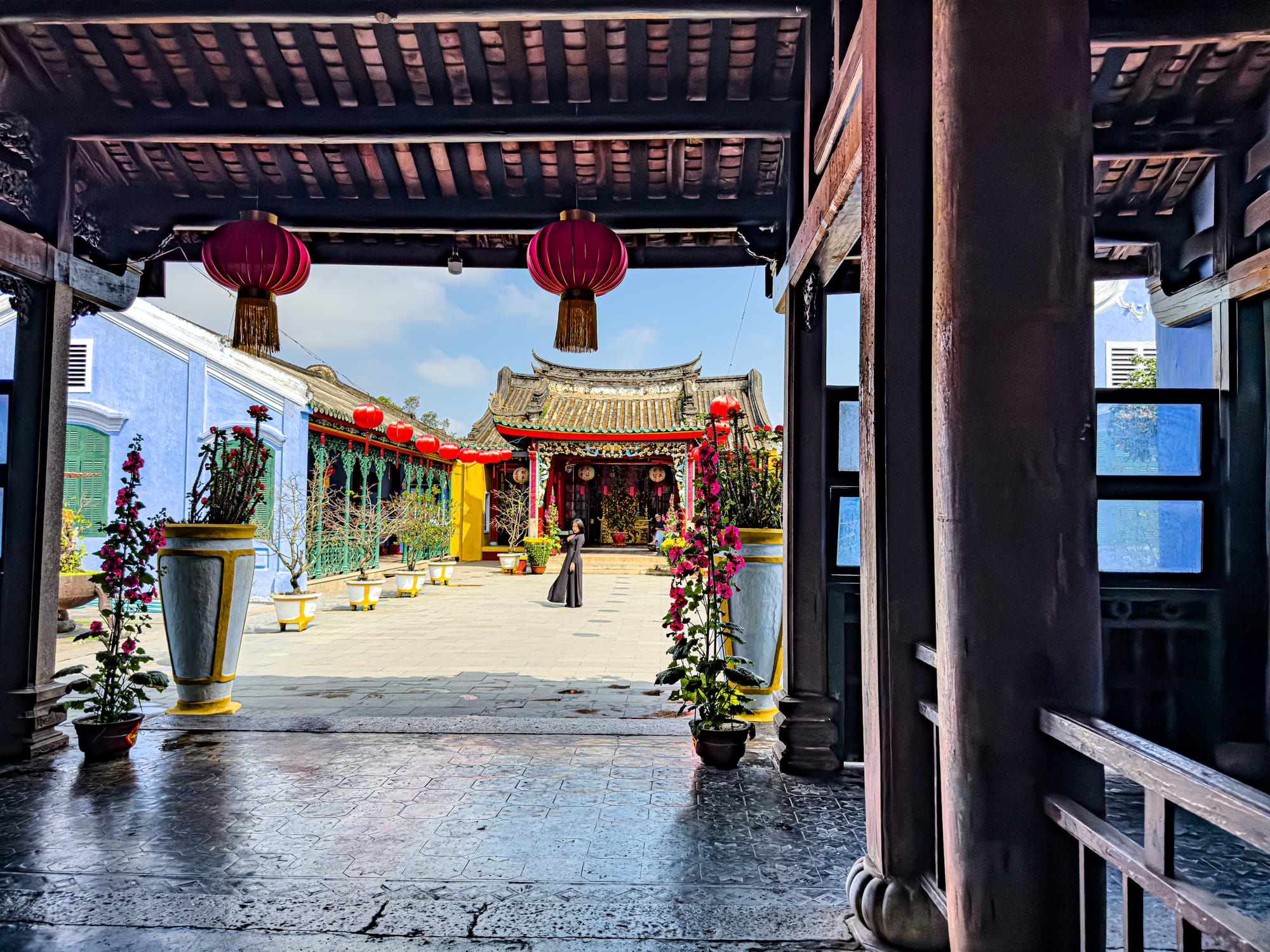
The Cantonese Assembly Hall, meanwhile, is renowned for its intricate mosaics made of porcelain and its large dragon statues coiling in dramatic poses. It was not only a place of worship but also a stage for community events, where festivals, meetings, and cultural performances reinforced bonds between members. The Hainan and Chaozhou assembly halls, though smaller, are equally atmospheric, each reflecting the regional identity of their founders while blending seamlessly into the shared life of Hội An.
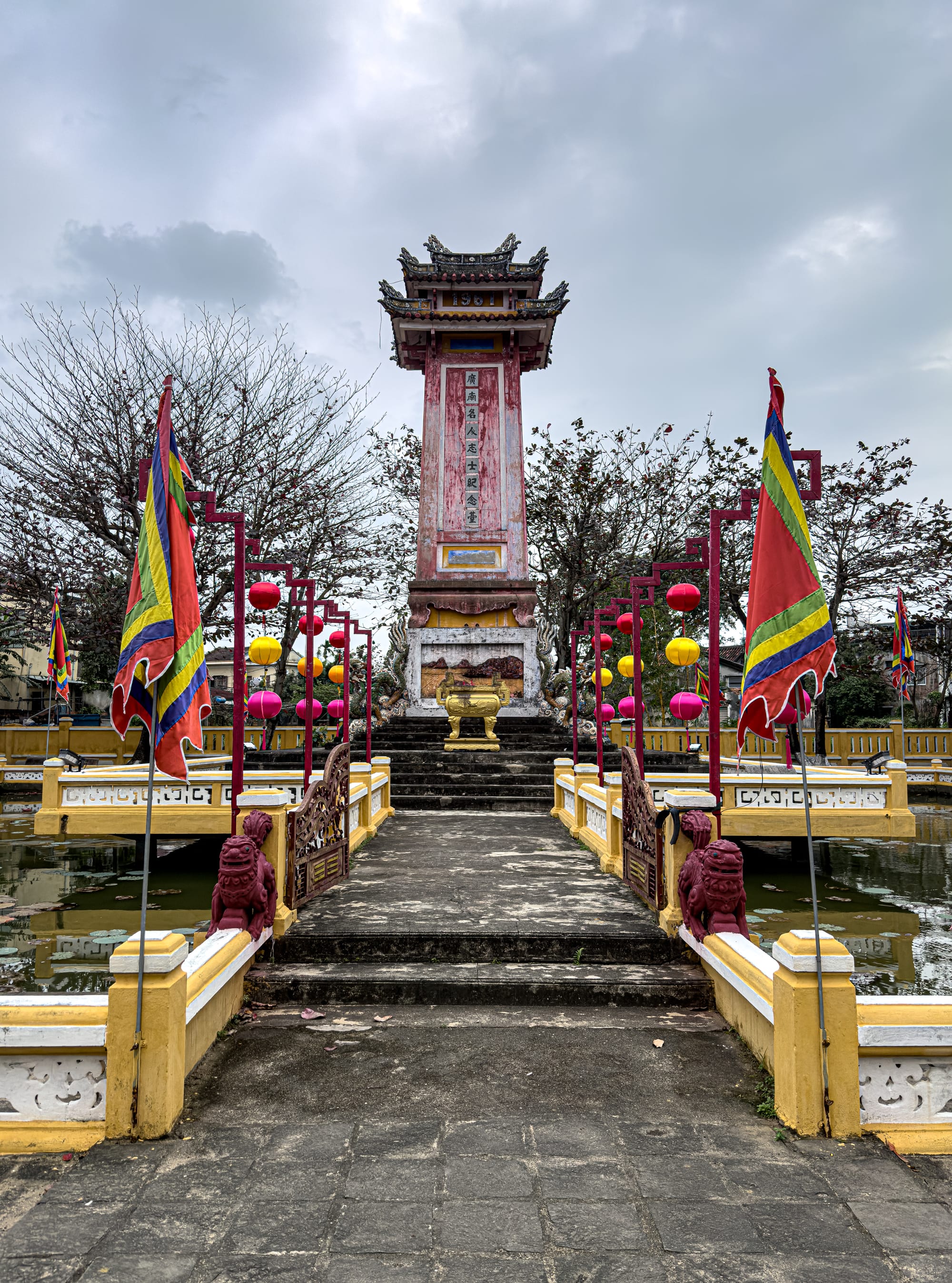
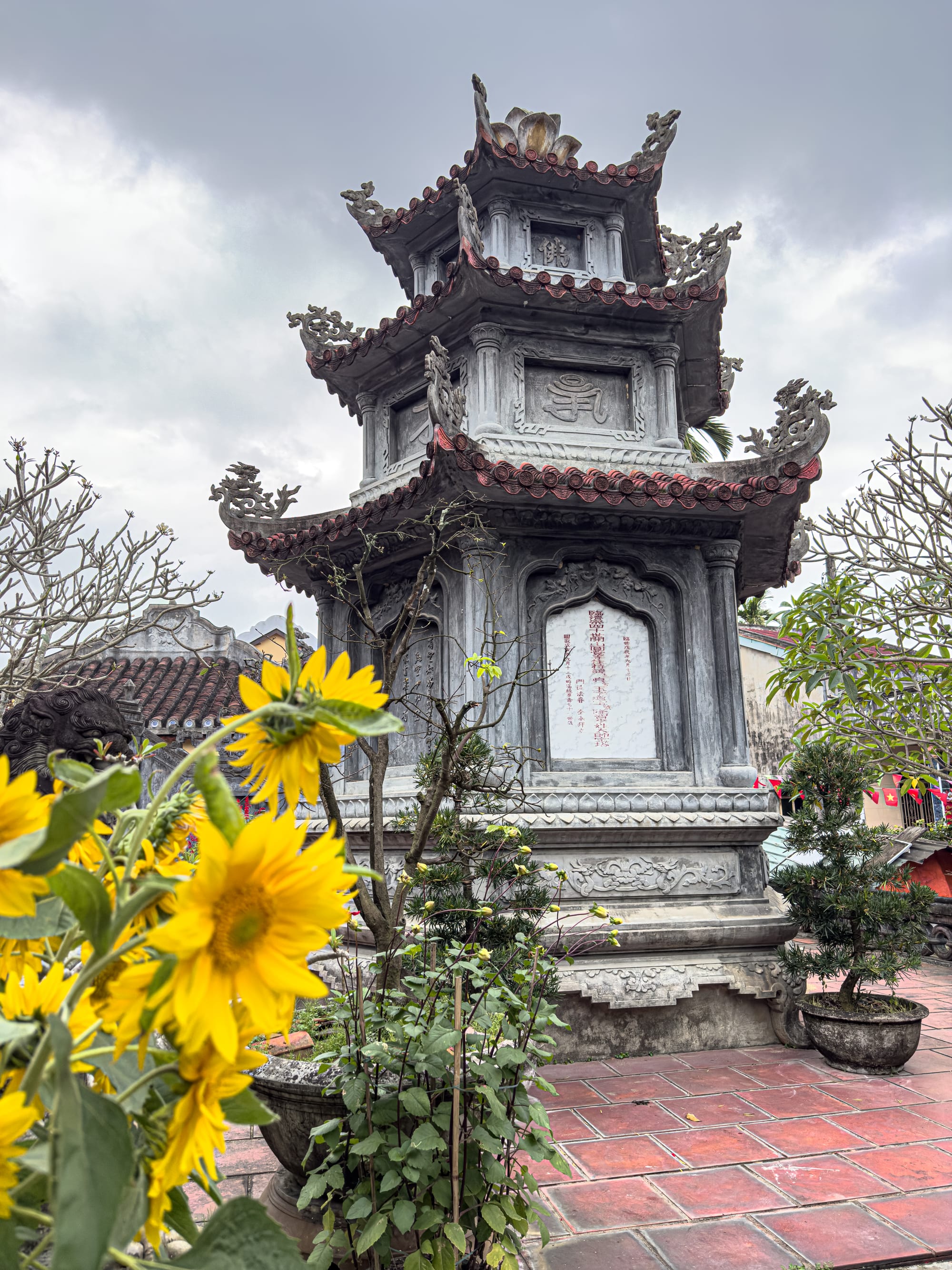
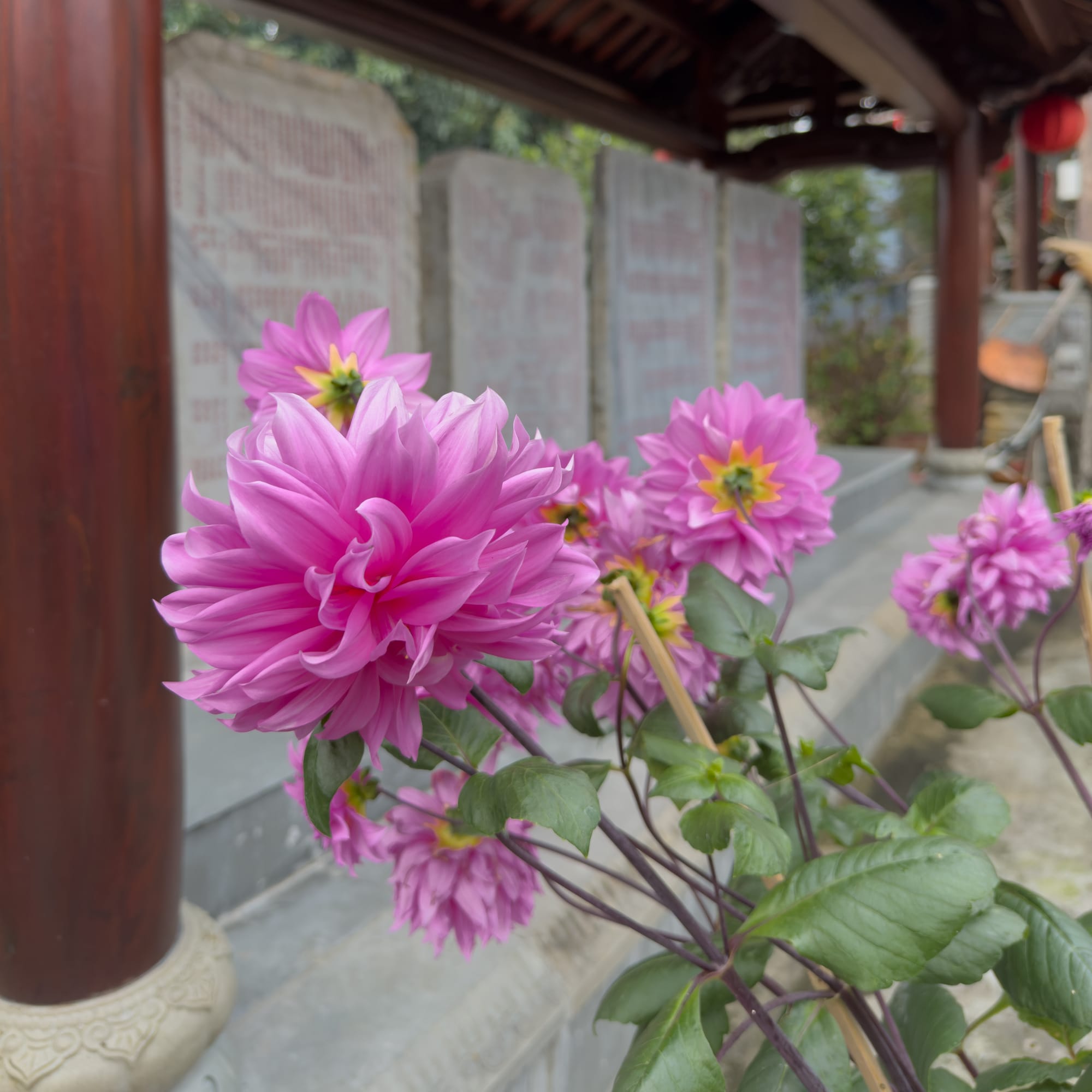
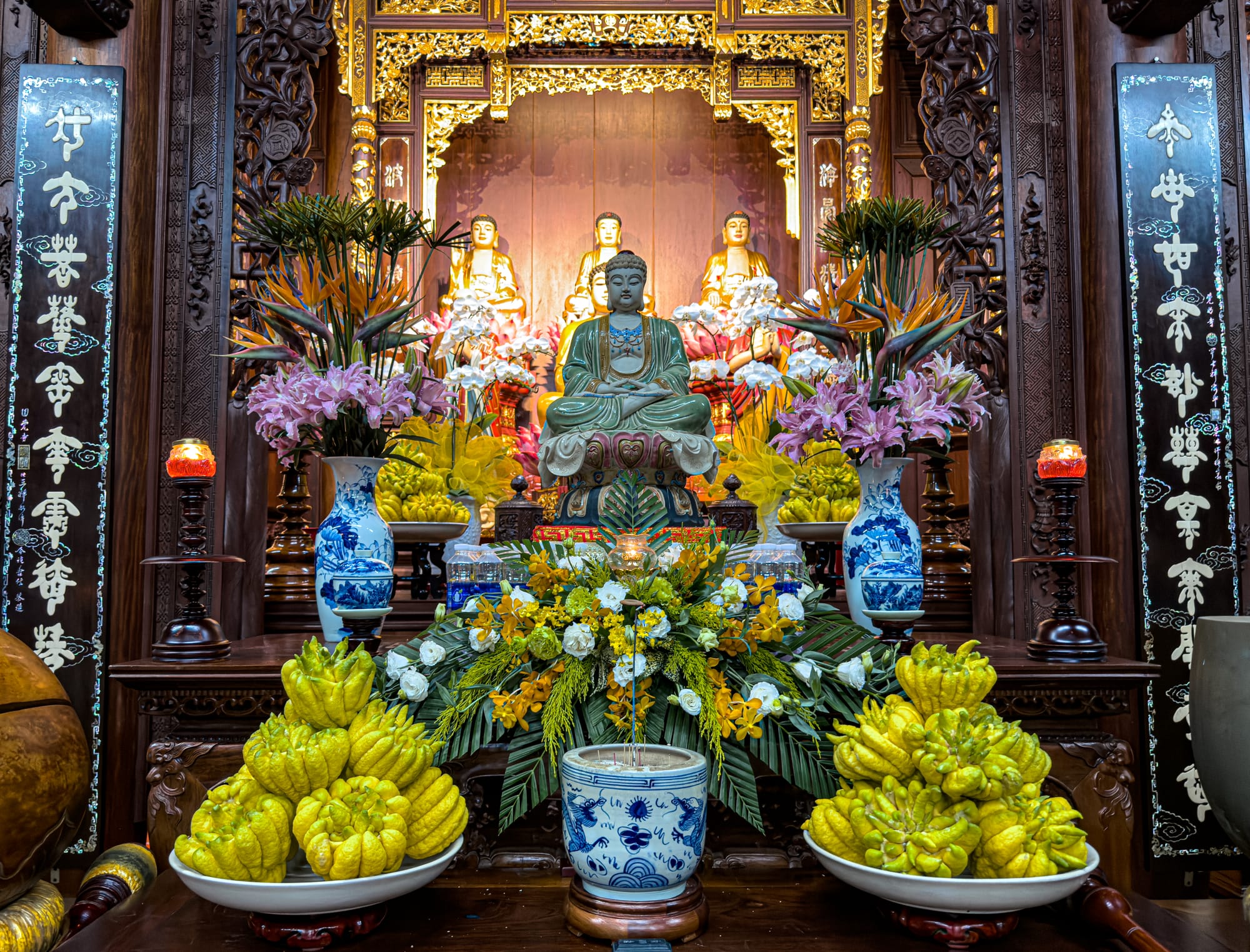
Hội An’s Chinese assembly halls blend gardens, altars, and intricate artistry into living spaces of devotion.
Visiting these halls is like stepping into small worlds within the Old Town. They are quieter than the busy streets outside, filled with the smell of incense and the glow of lantern light. They remind us that Hội An was never simply a Vietnamese town, but a multicultural crossroads where traditions from across Asia were transplanted, adapted, and preserved. The assembly halls remain as guardians of this layered identity, standing as both places of worship and cultural memory.
Streets of timeless beauty
To wander through Hội An’s Old Town is to experience a landscape where every detail holds meaning. The streets range from bustling avenues lined with shops to narrow alleys where bicycles rest against timeworn walls.
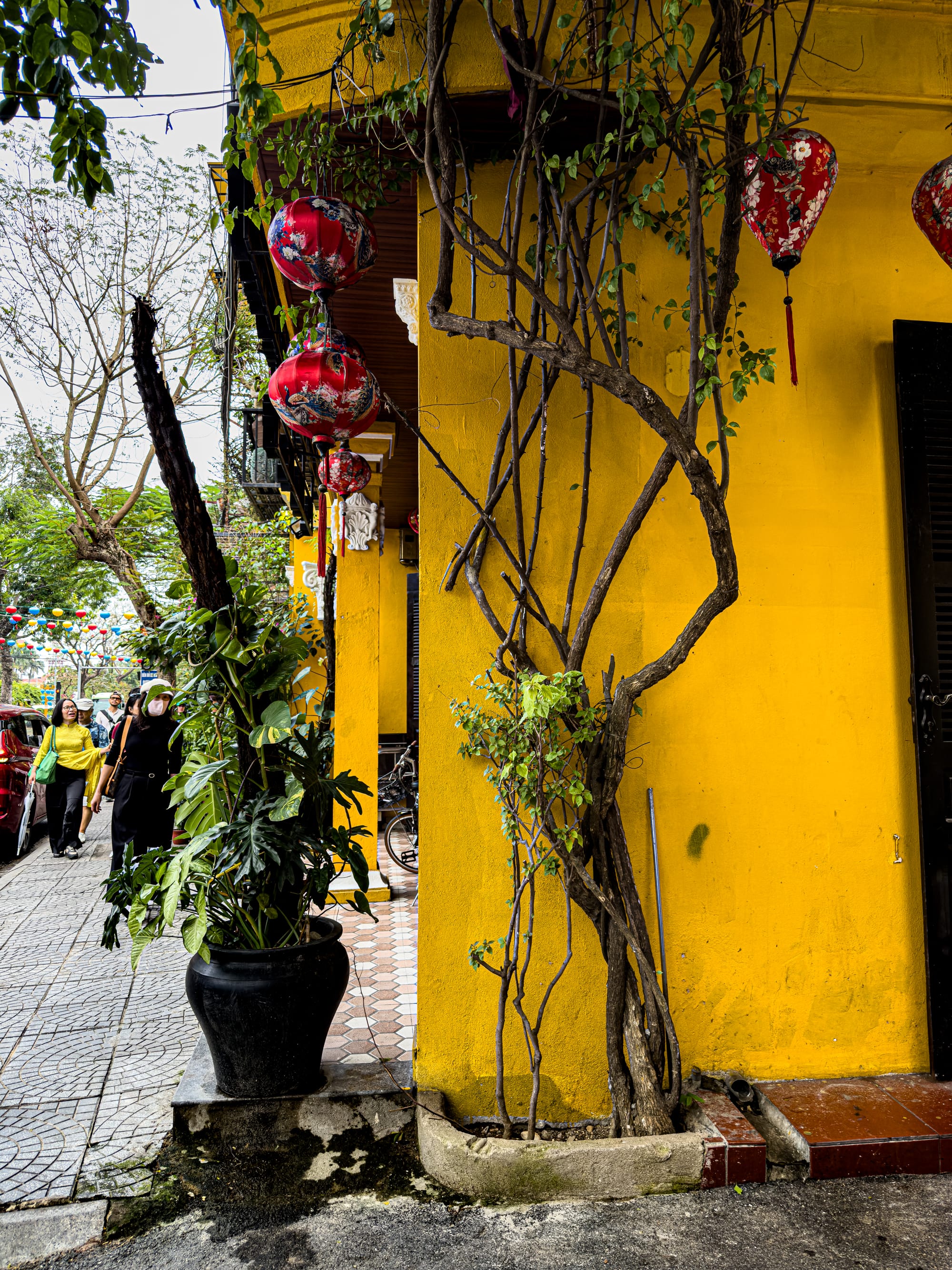
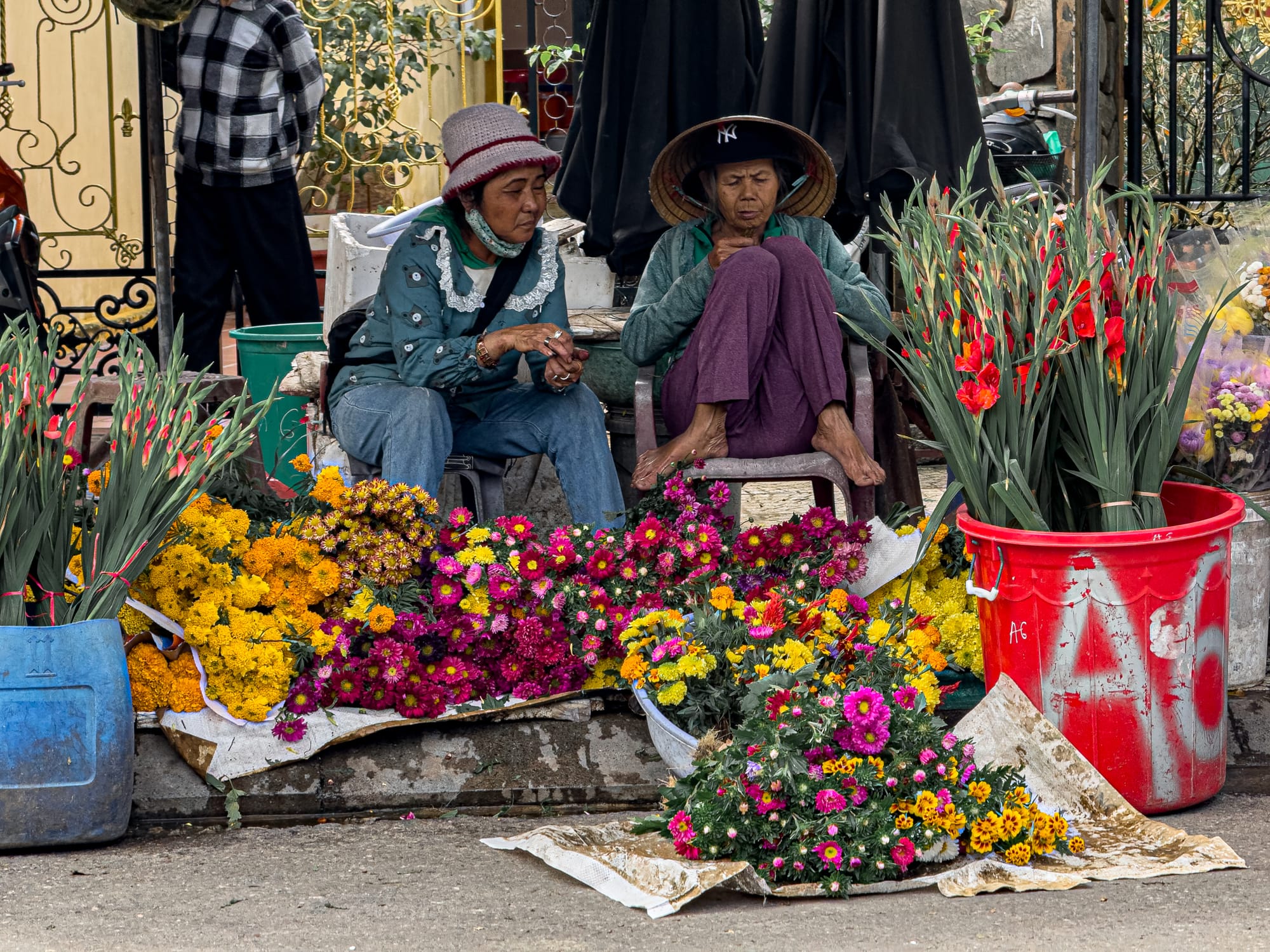
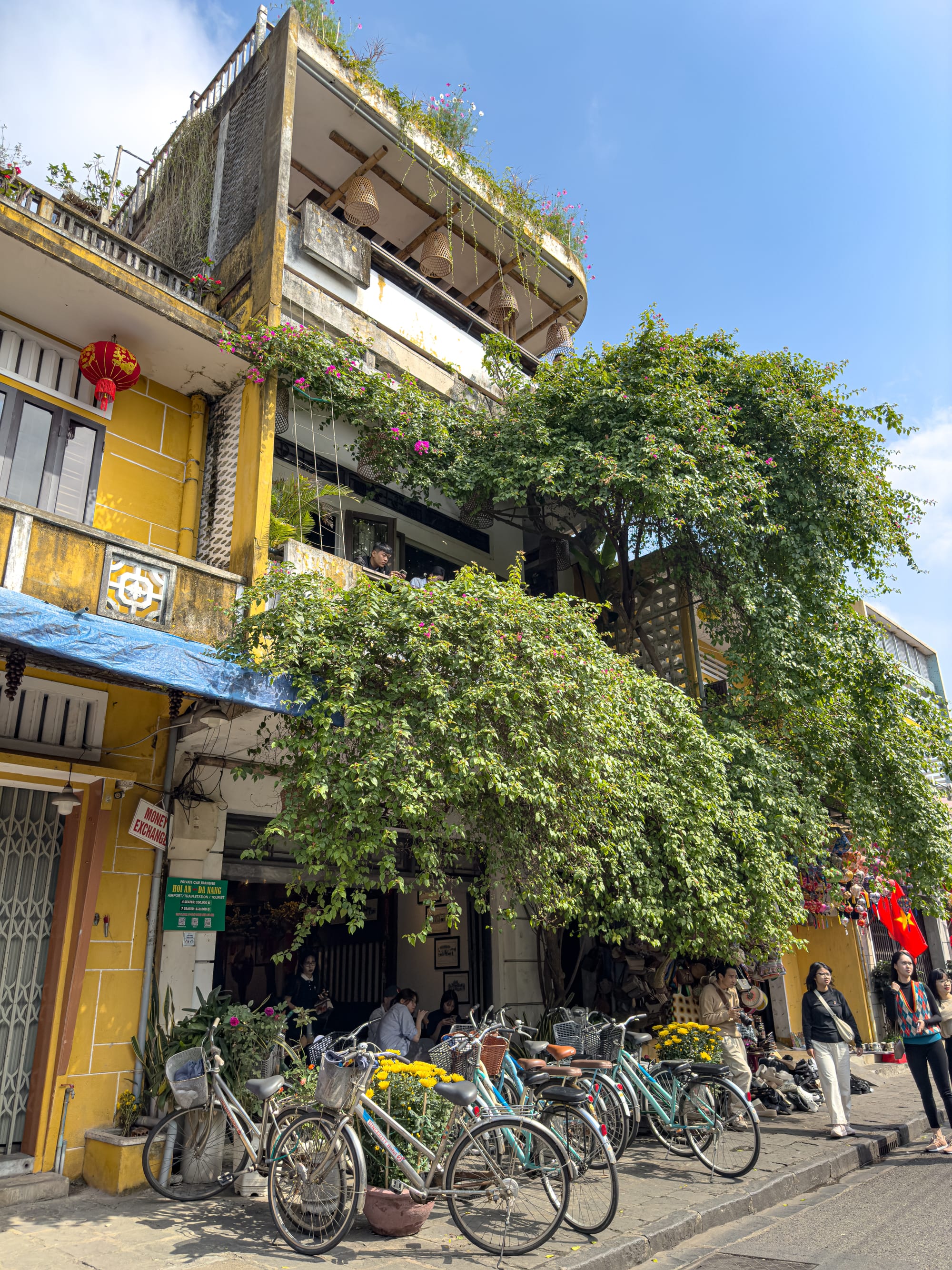
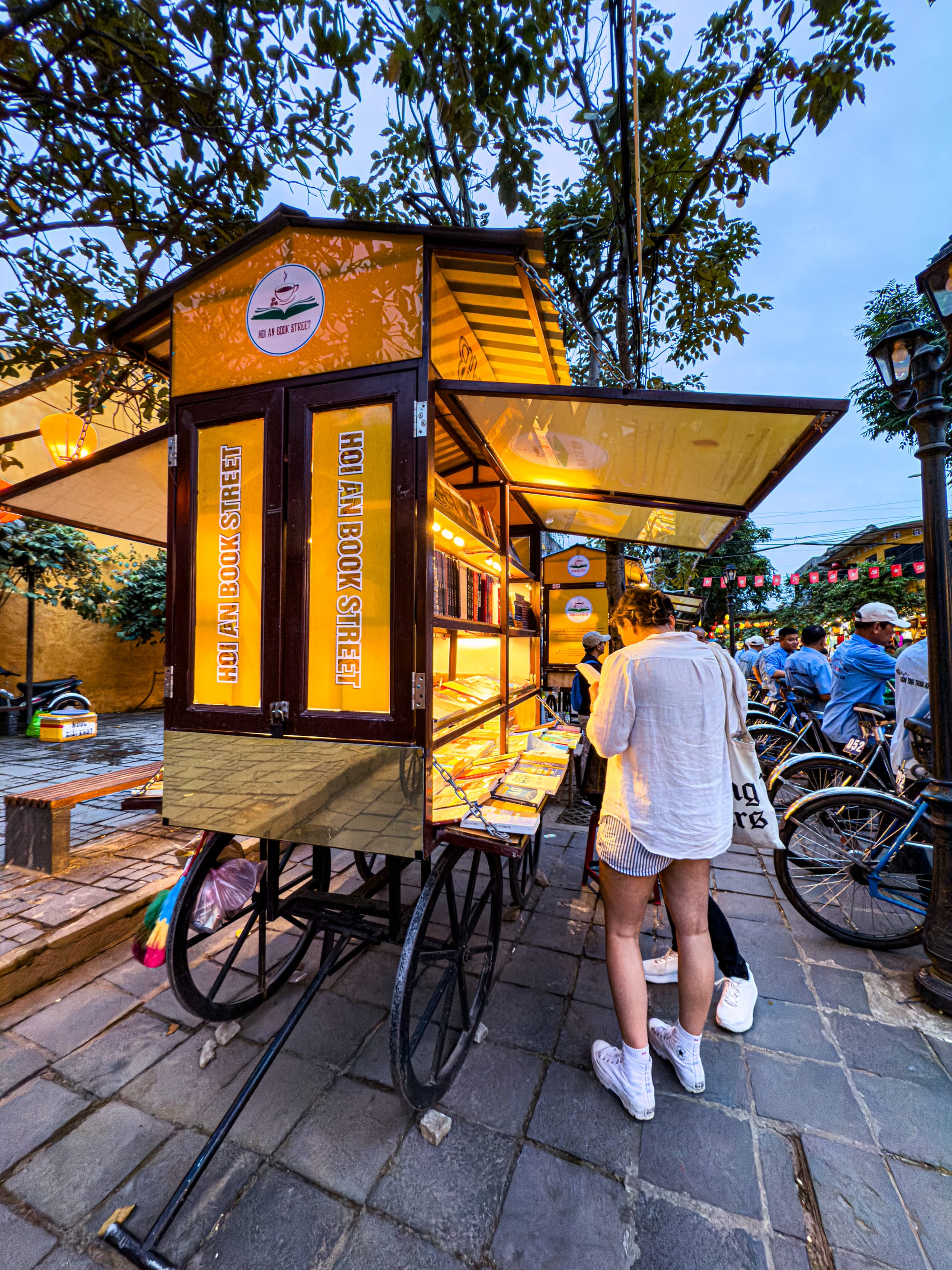
From flower stalls to book kiosks, Hội An’s Old Town streets brim with color and everyday charm
Each facade tells a story: faded yellow plaster hinting at the passage of centuries, carved wooden balconies showing the artistry of craftsmen, colorful lanterns swaying in the breeze adding both beauty and intimacy. Vendors set up stalls under ancient trees, selling fresh fruit, handmade toys, and silk goods. The air is rich with the scent of incense from temples, the sweetness of street food, and the faint salt of the nearby sea.
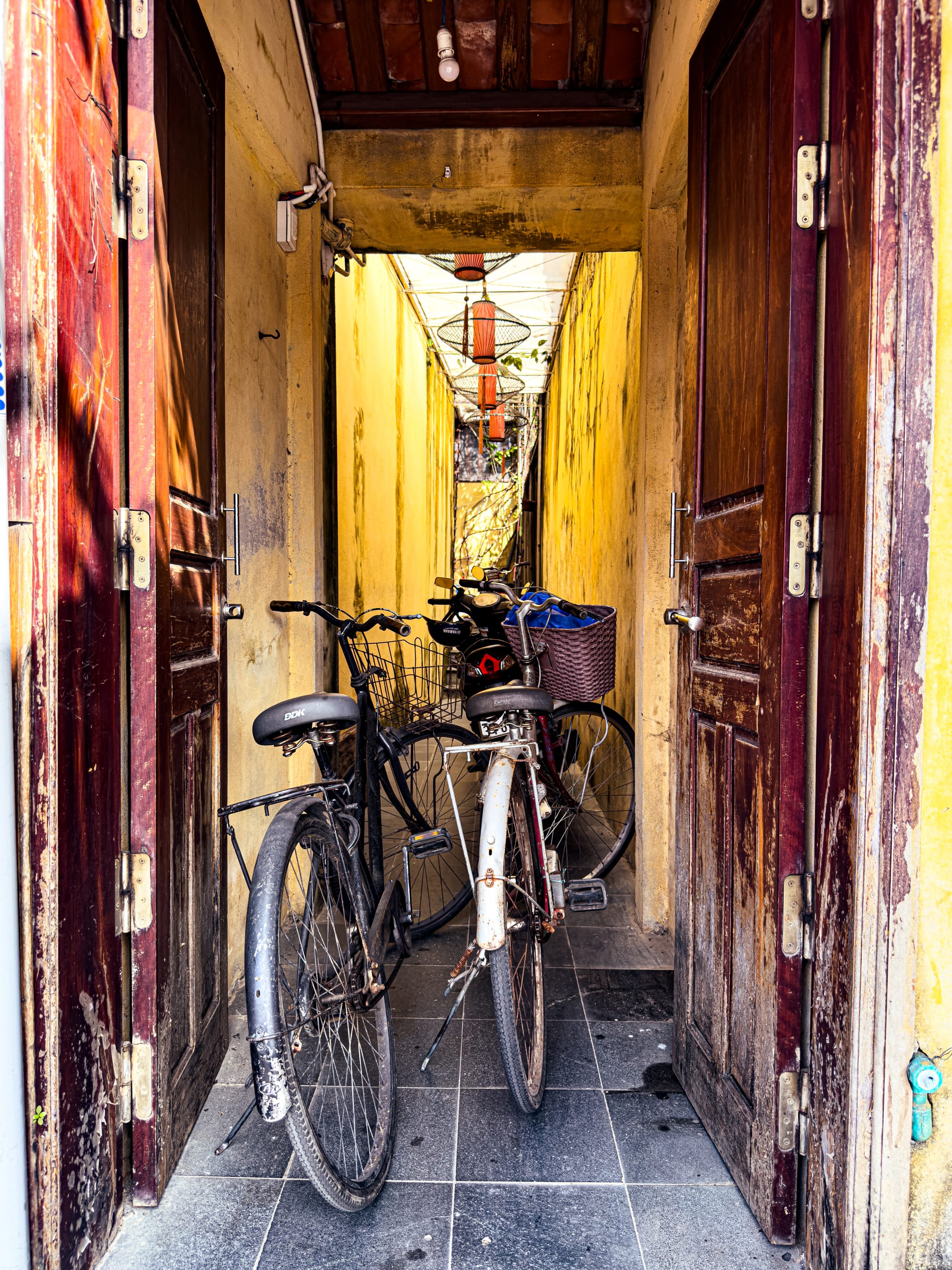
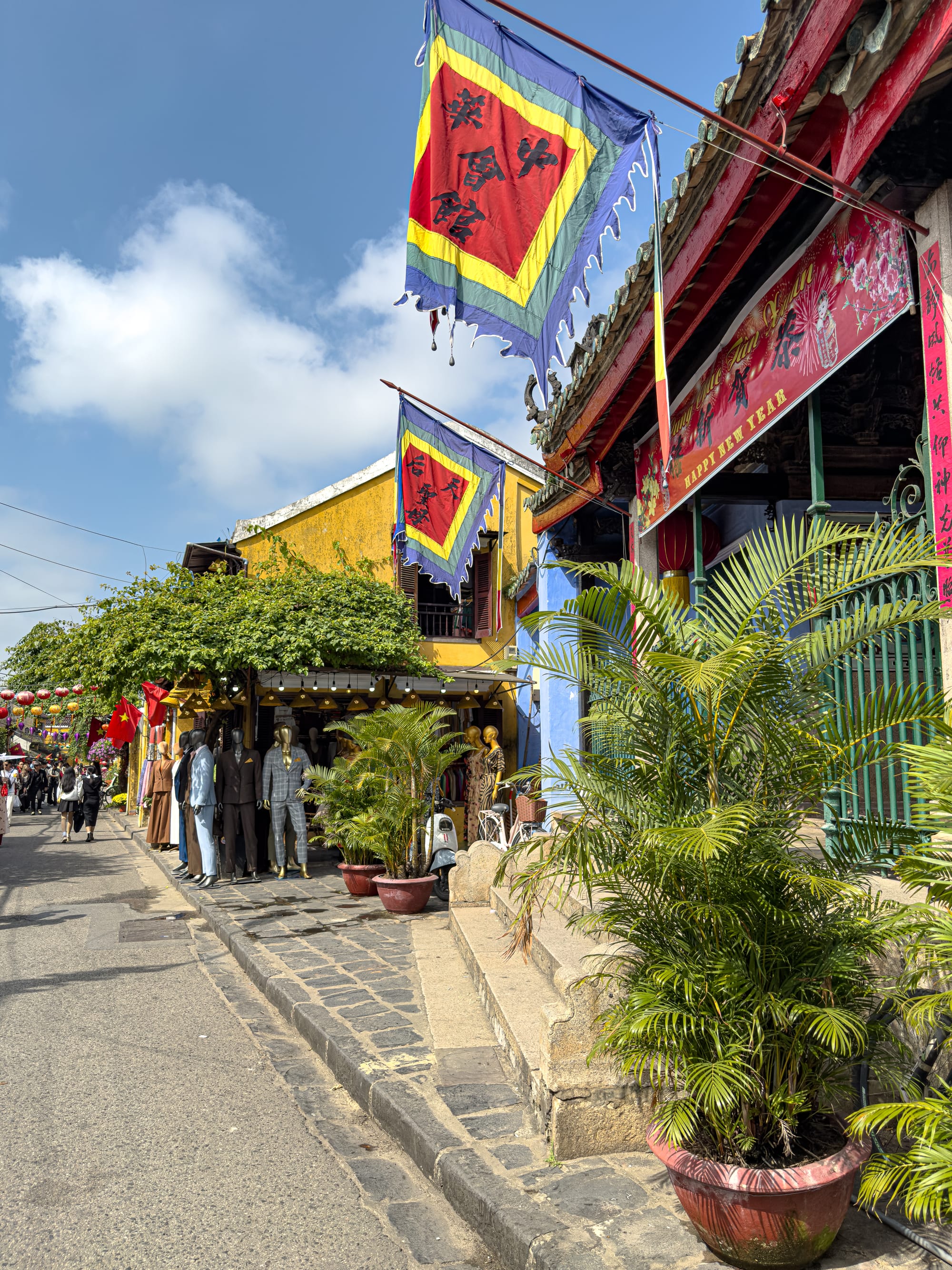
Everyday life in Hội An’s Old Town, from bicycles tucked in golden alleyways to vibrant tailor shop streets
What makes the Old Town remarkable is how seamlessly the past and present coexist. Traditional music sometimes drifts from cultural performances, while young locals and travelers sip coffee in chic modern cafes. Cyclists glide past historic assembly halls, and families light incense at ancestral shrines before heading to markets filled with tourists. It is this layering of life—old and new, local and global—that gives Hội An its unique character.
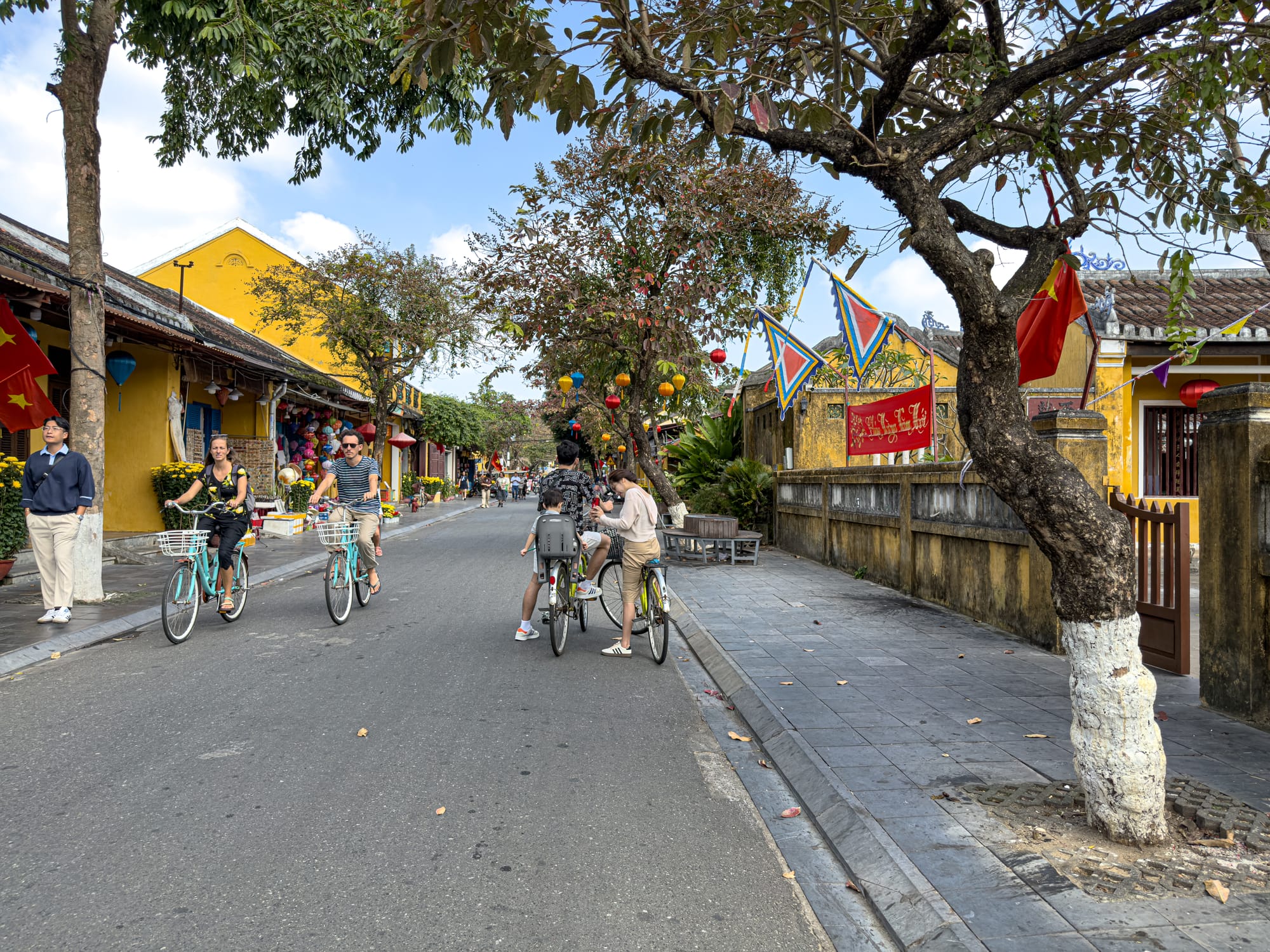
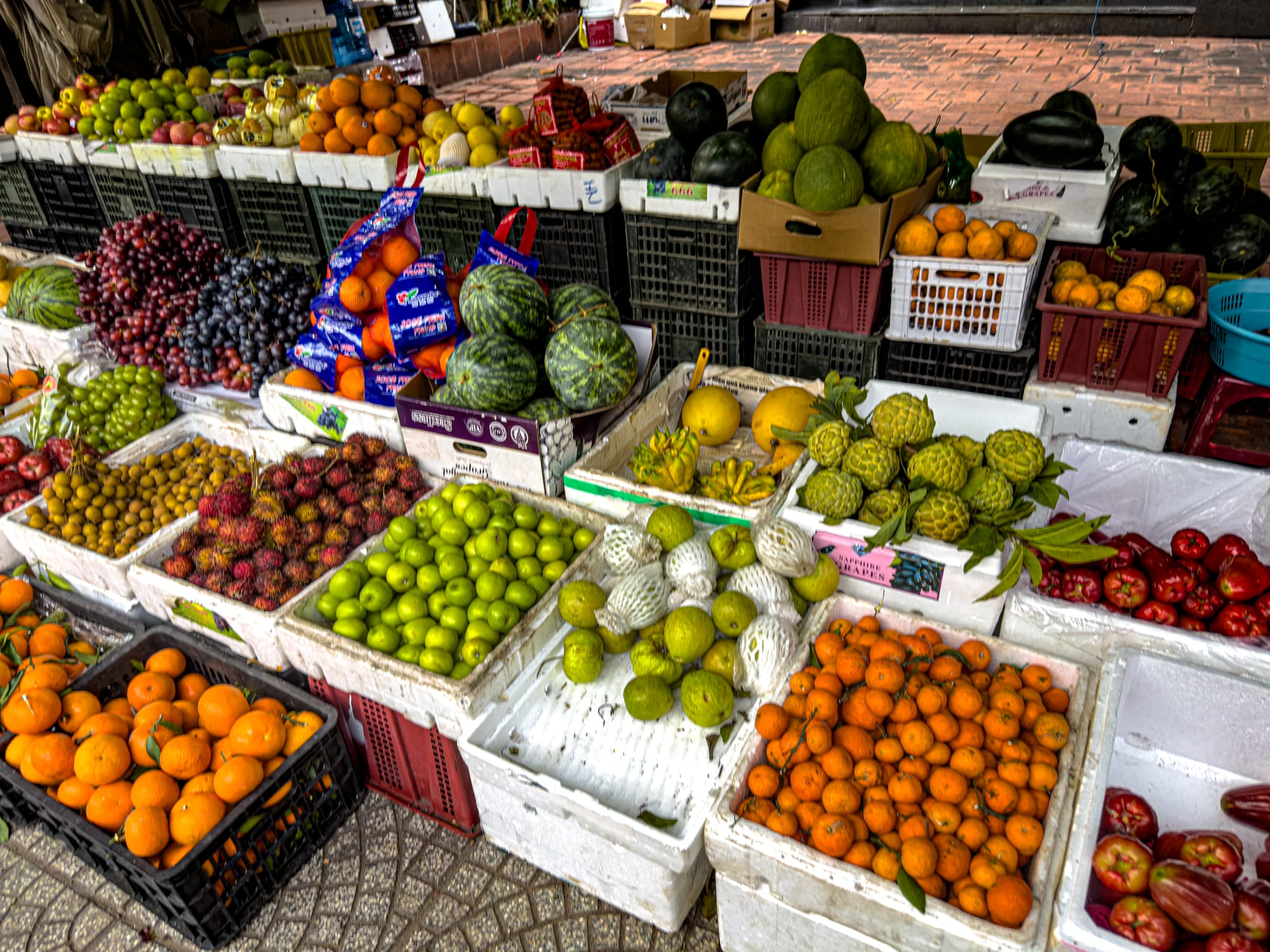
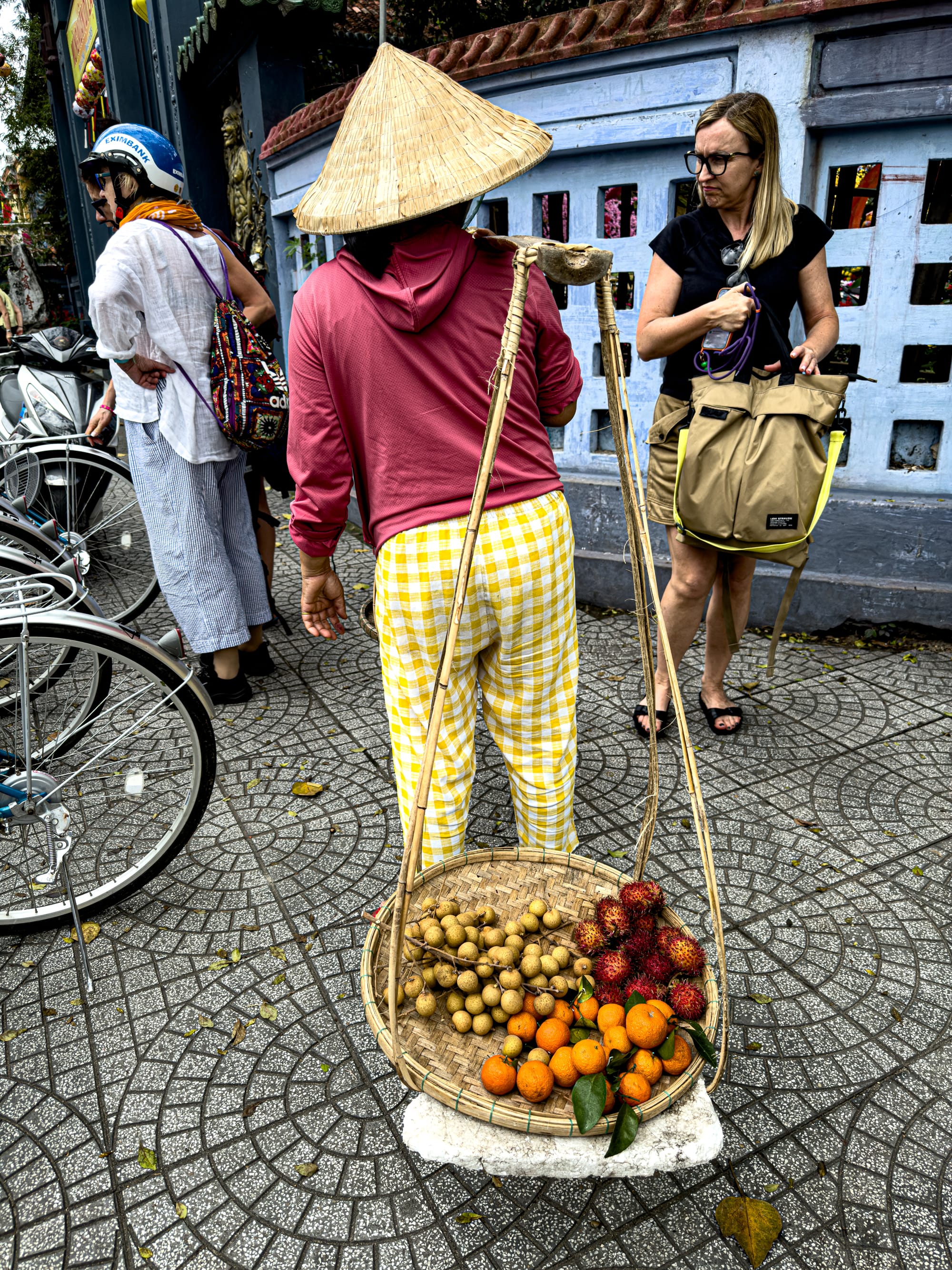
Colorful fruit markets bring Hội An’s Old Town to life with tropical abundance and daily trade
It is in these streets that Hội An’s true magic resides. Not only in grand monuments, but in small, everyday scenes: a woman arranging flowers outside her door, schoolchildren cycling home as lanterns begin to glow, monks passing through temple gates in saffron robes. Each encounter, whether with architecture, people, or light, adds another layer to the town’s quiet, timeless beauty.
If you're new to Hội An’s and looking to learn a bit more about its Old Town, we recommend this walking tour, which will give you a good overview of the landmarks.






